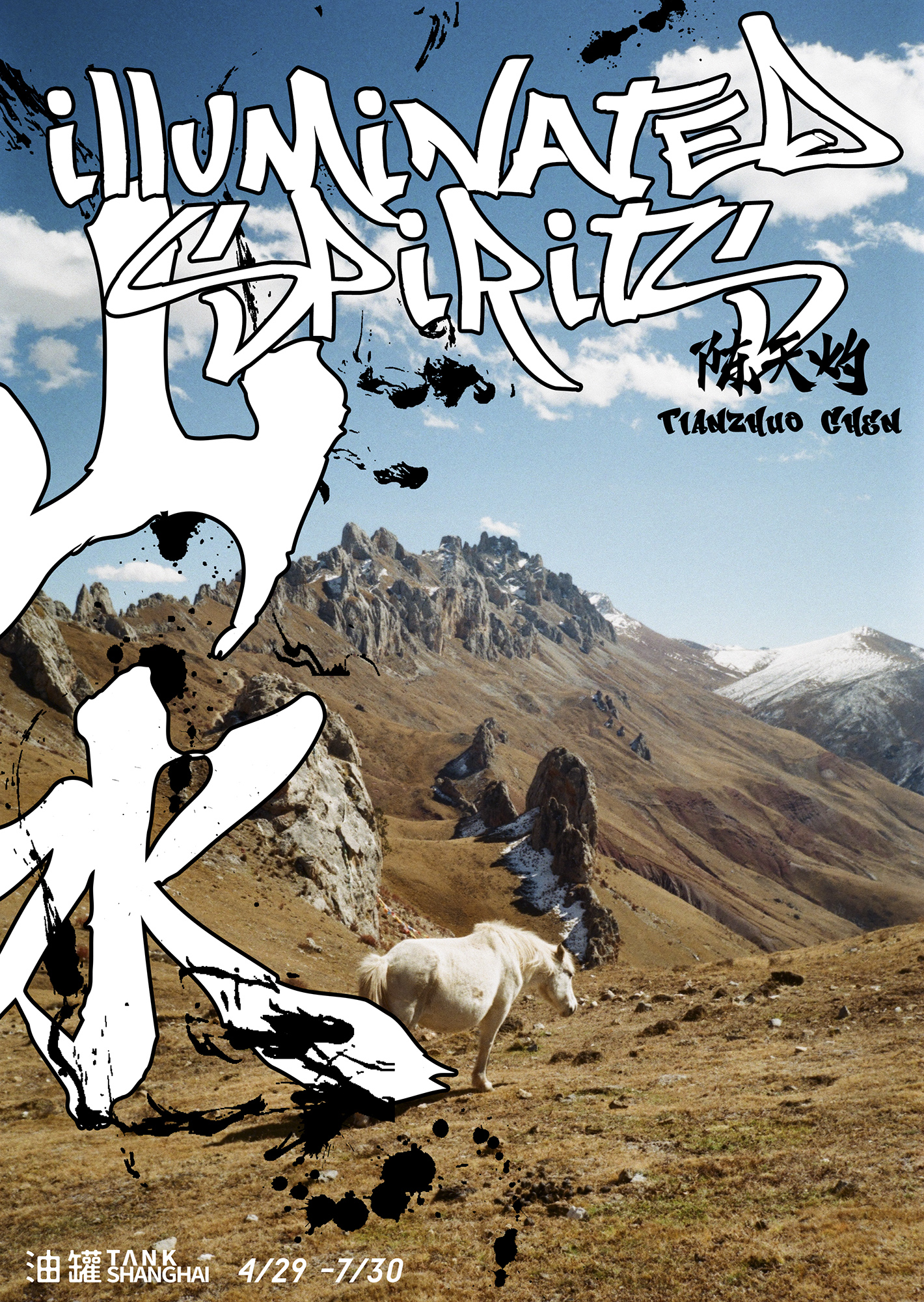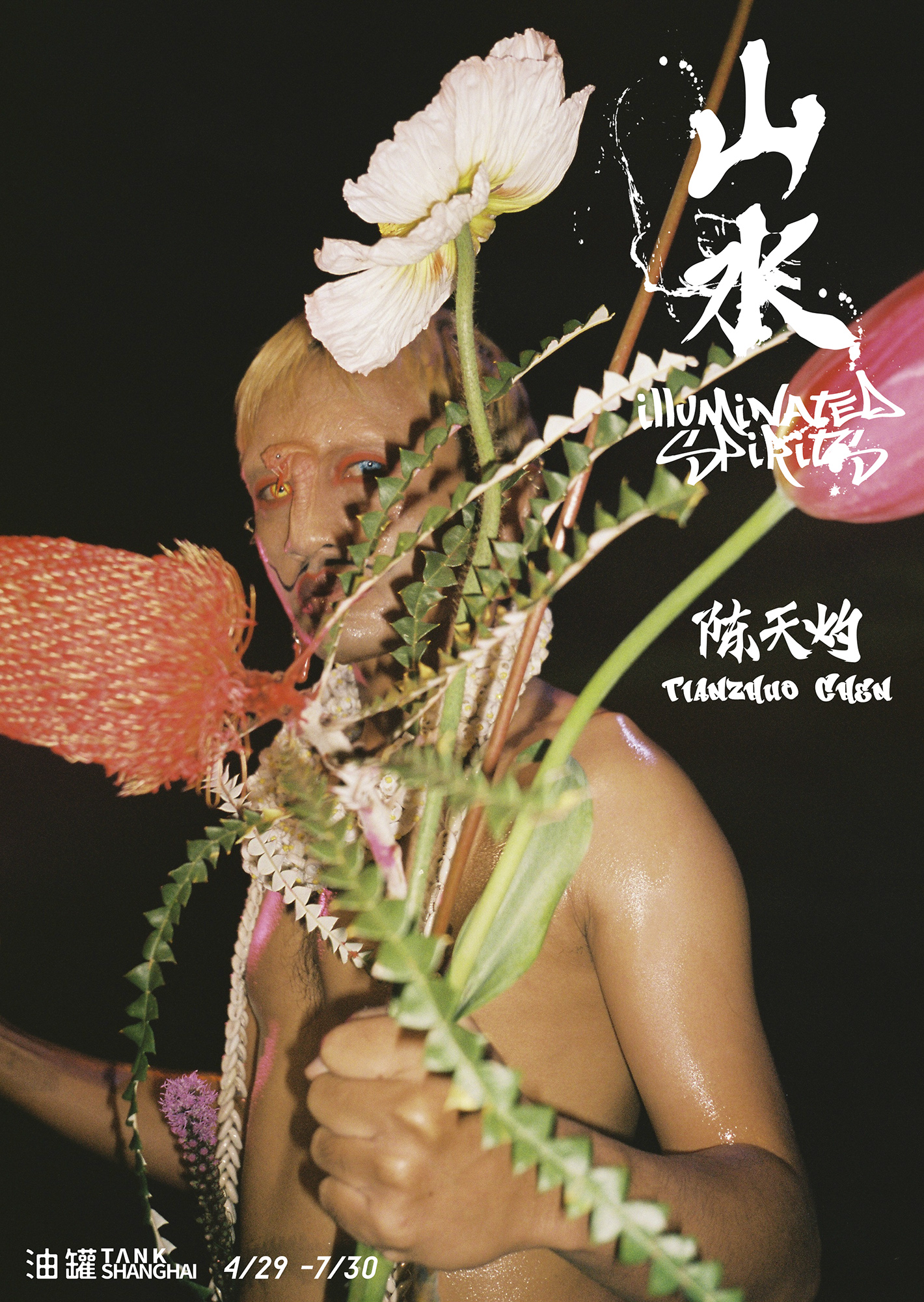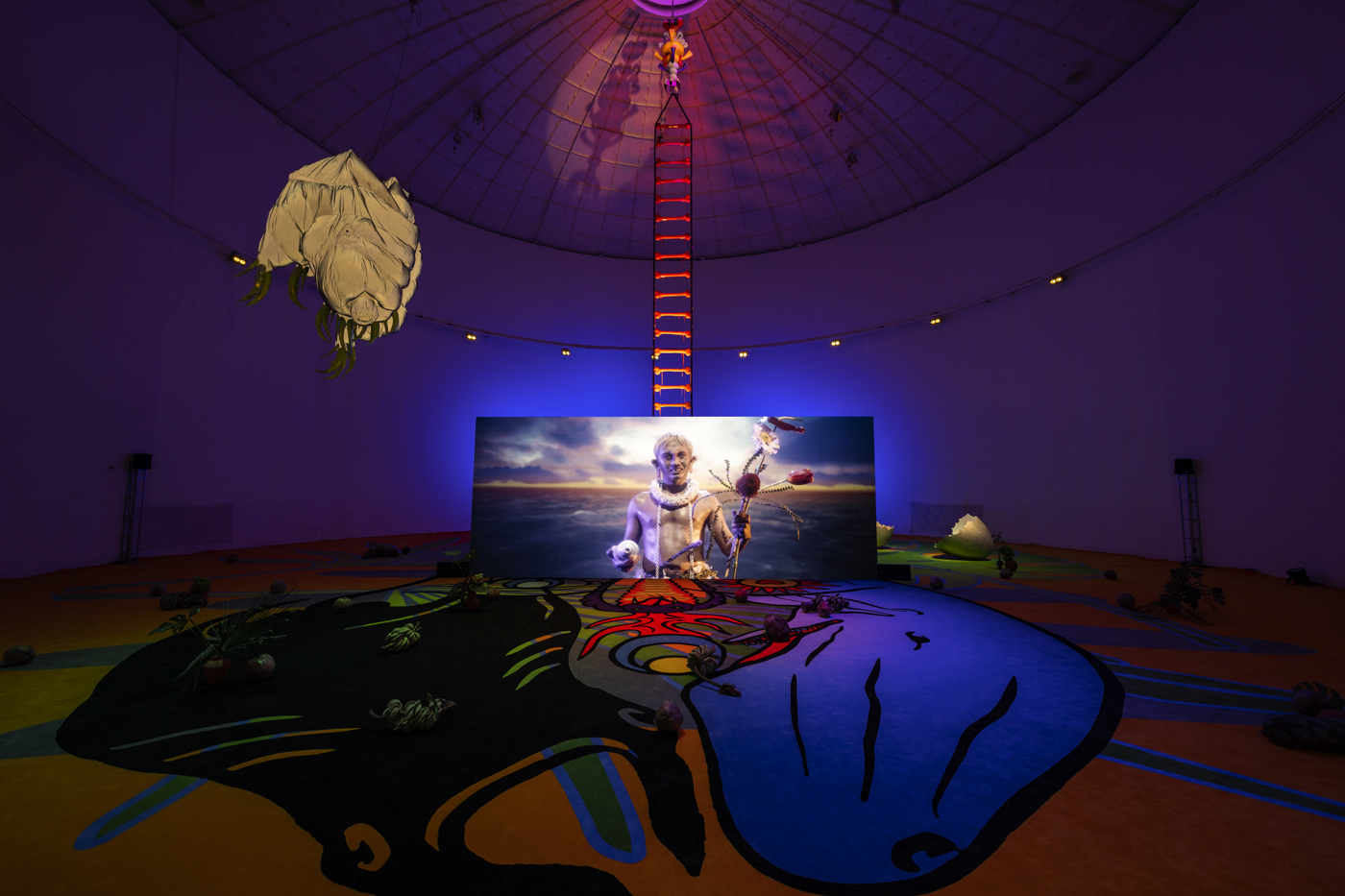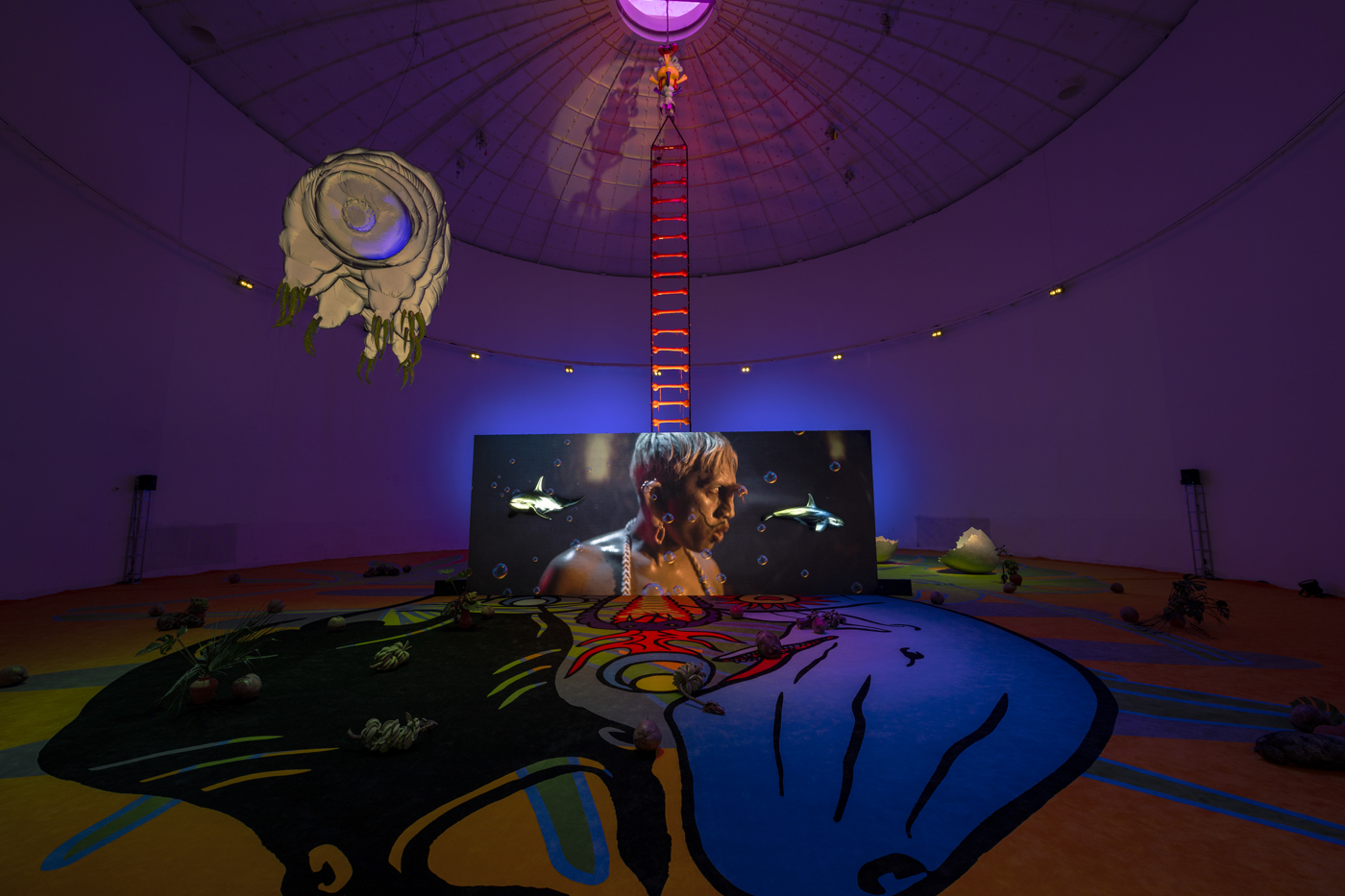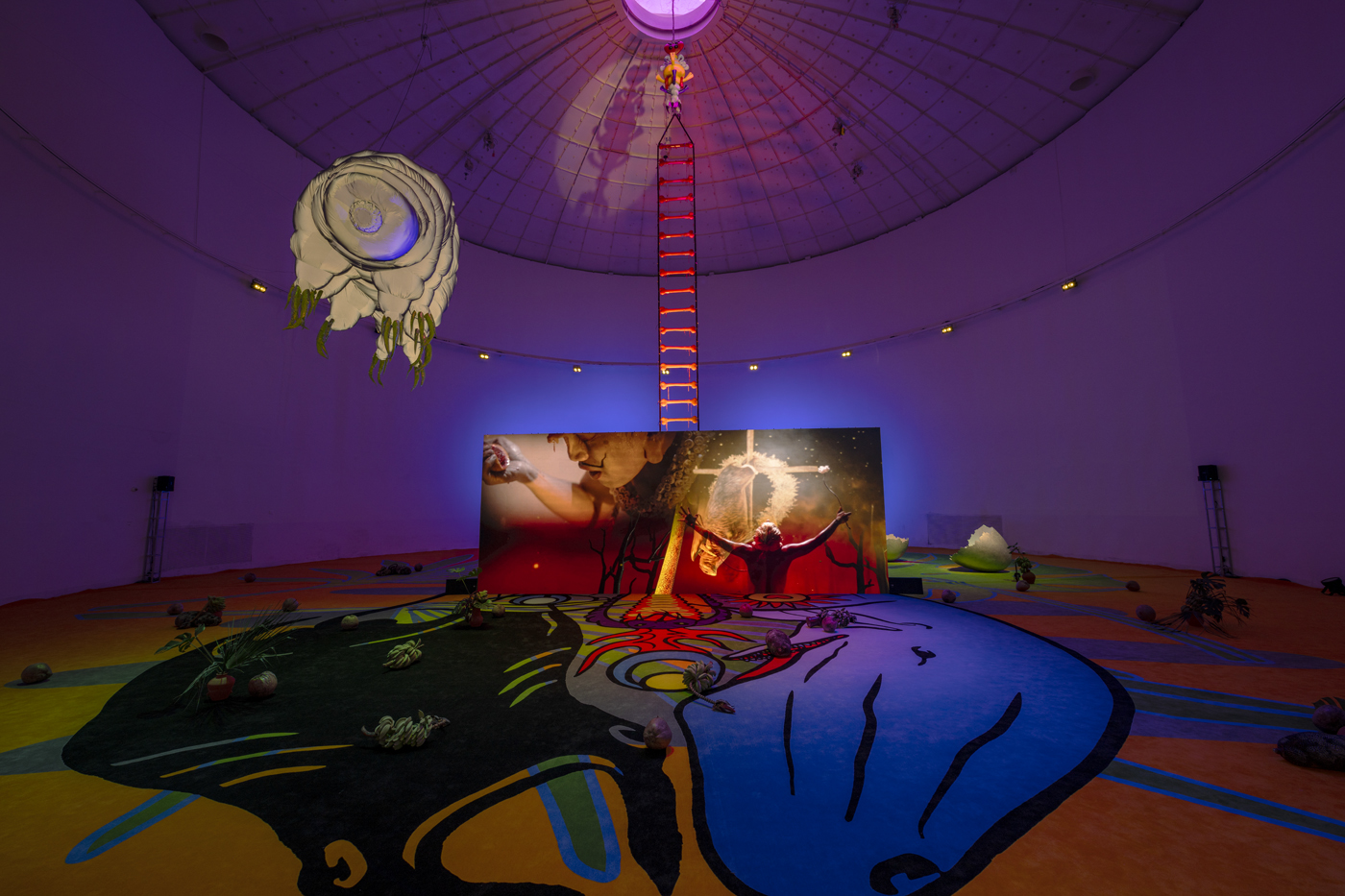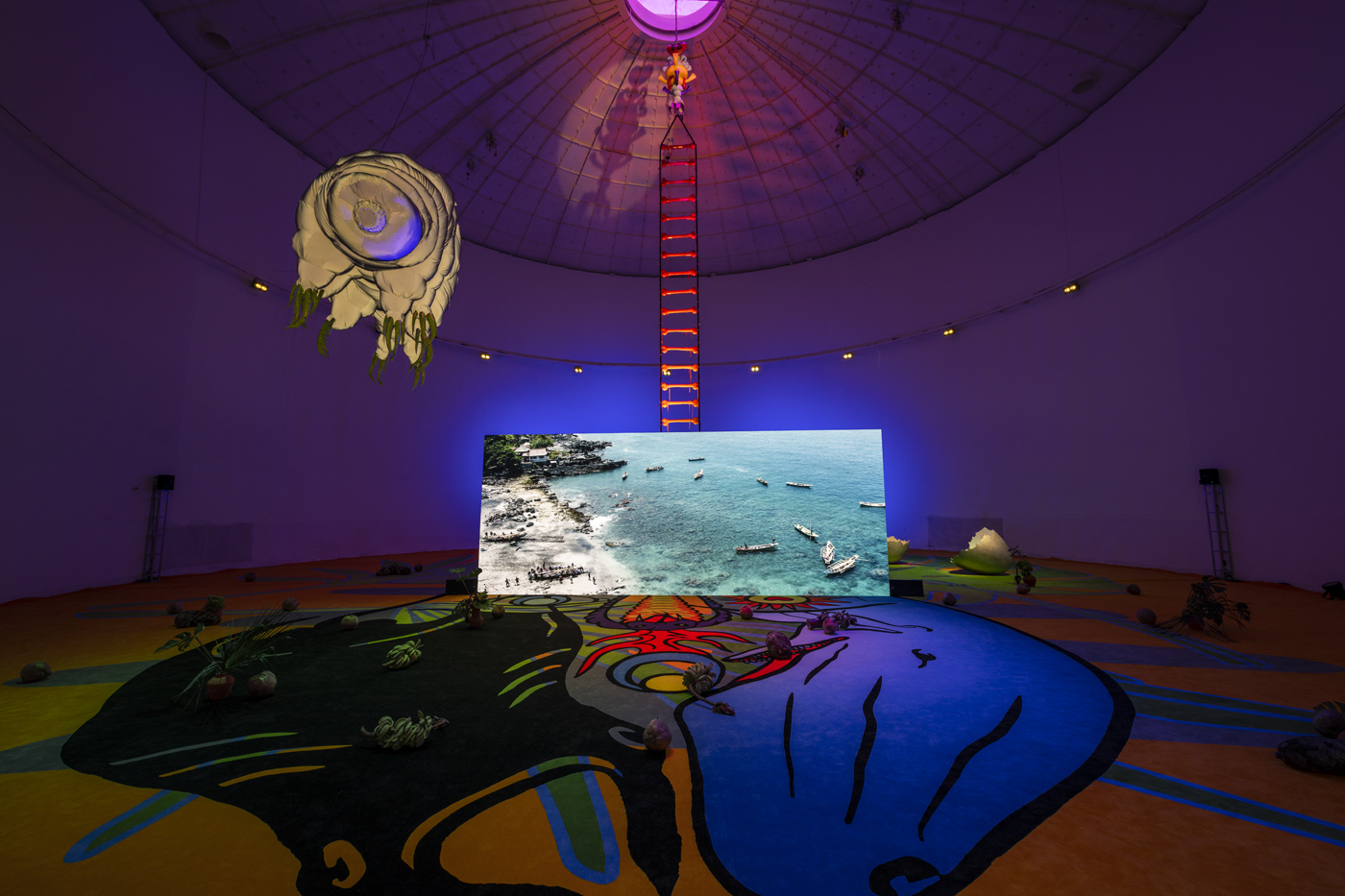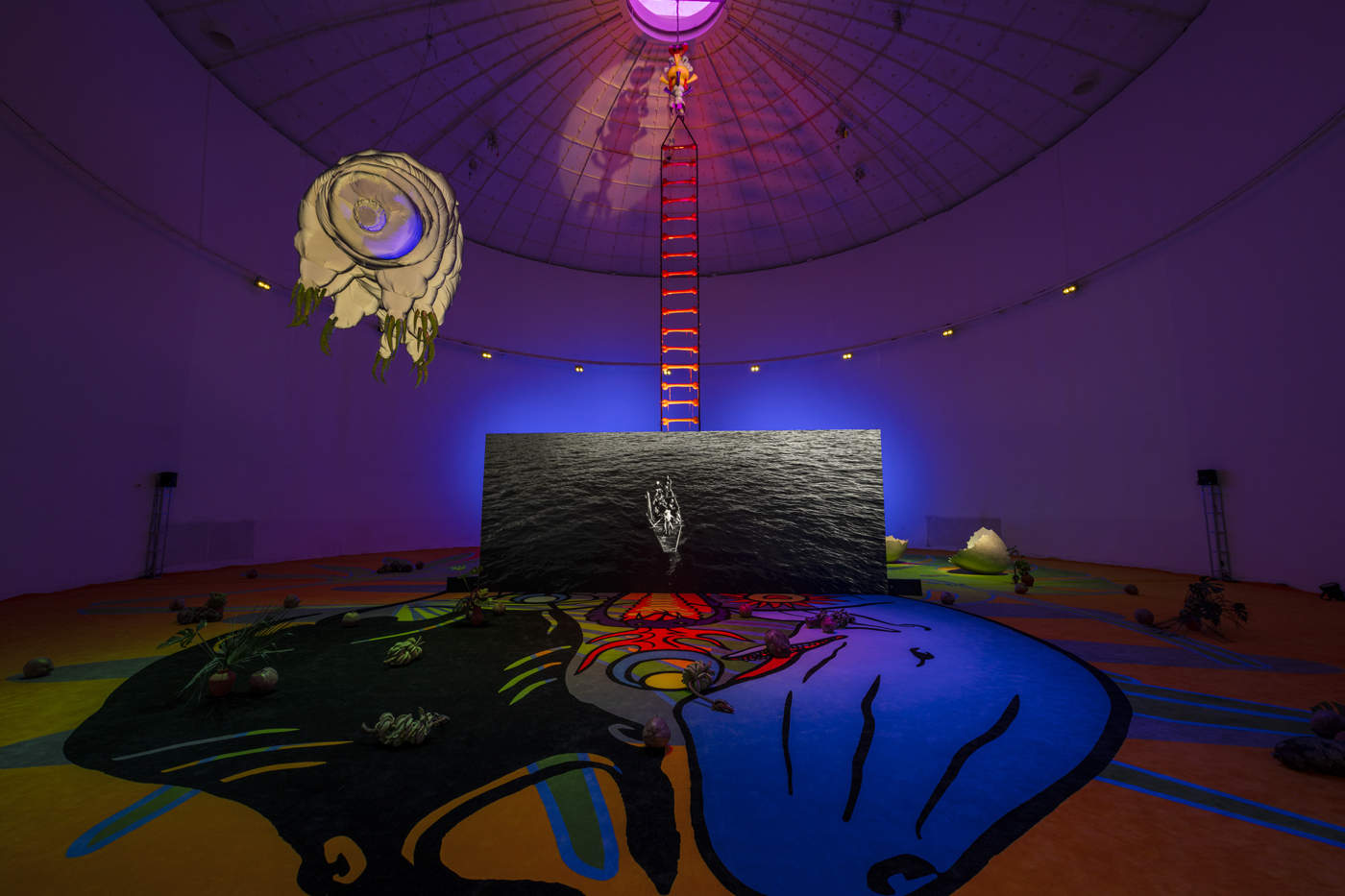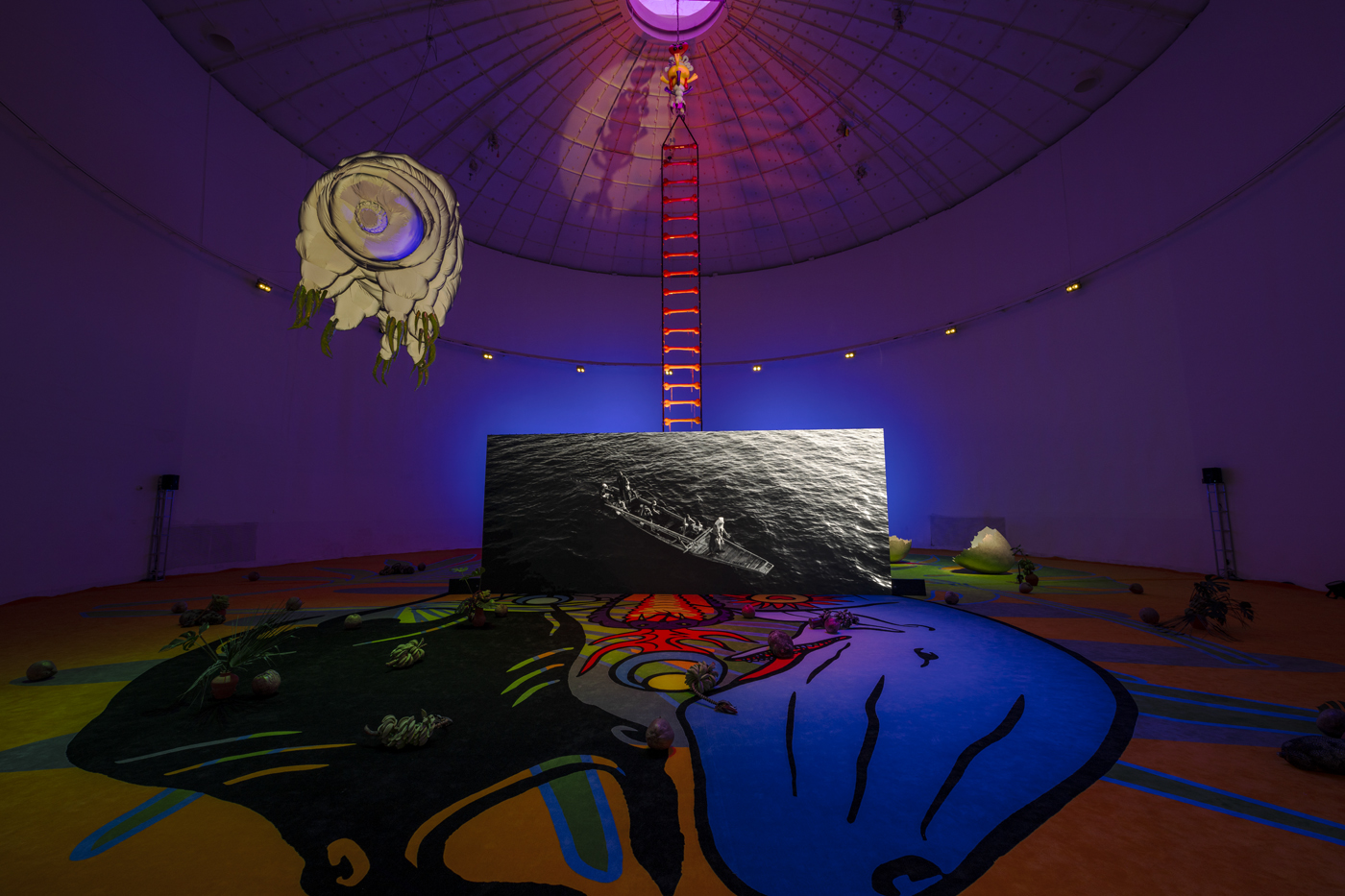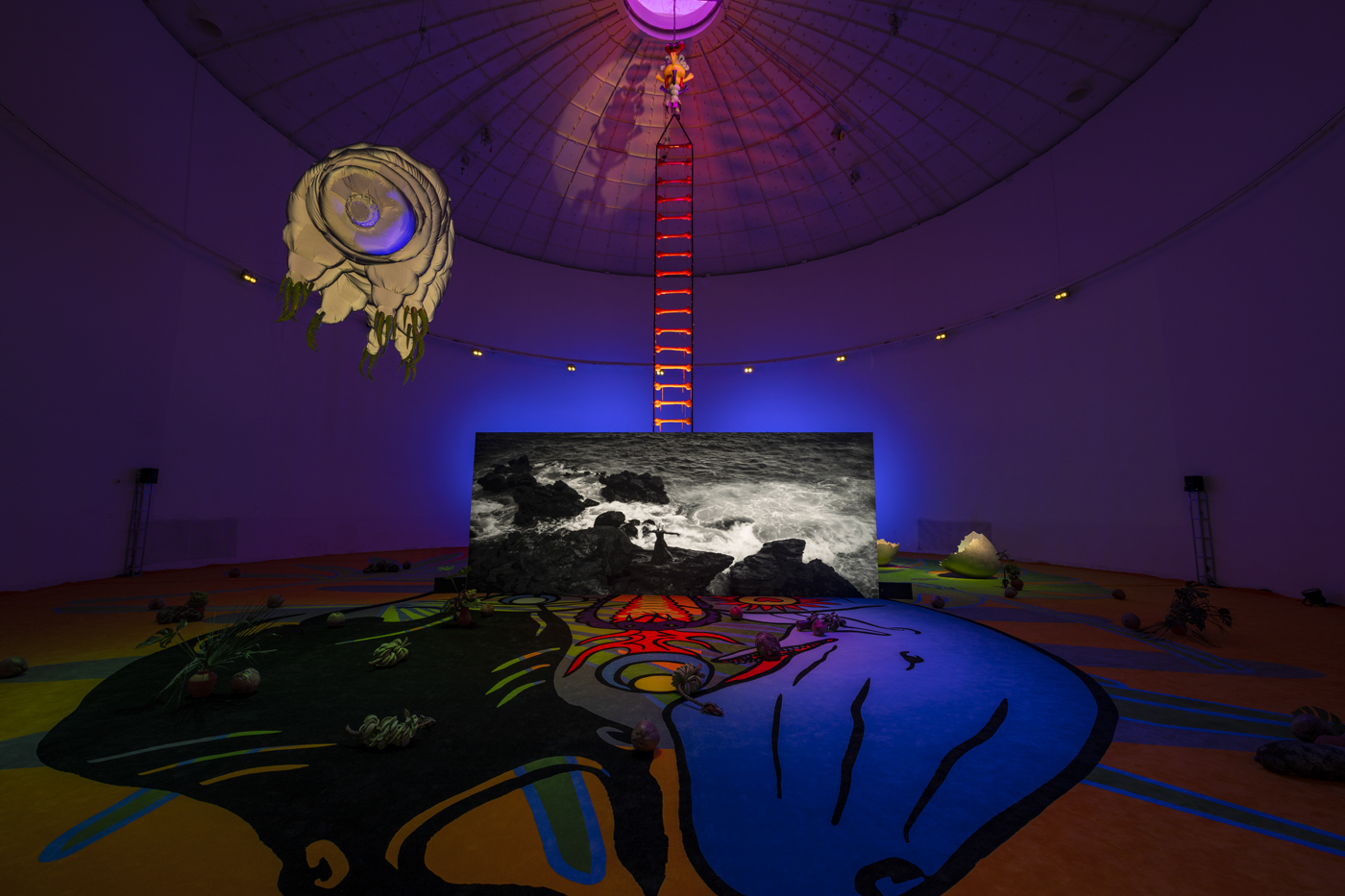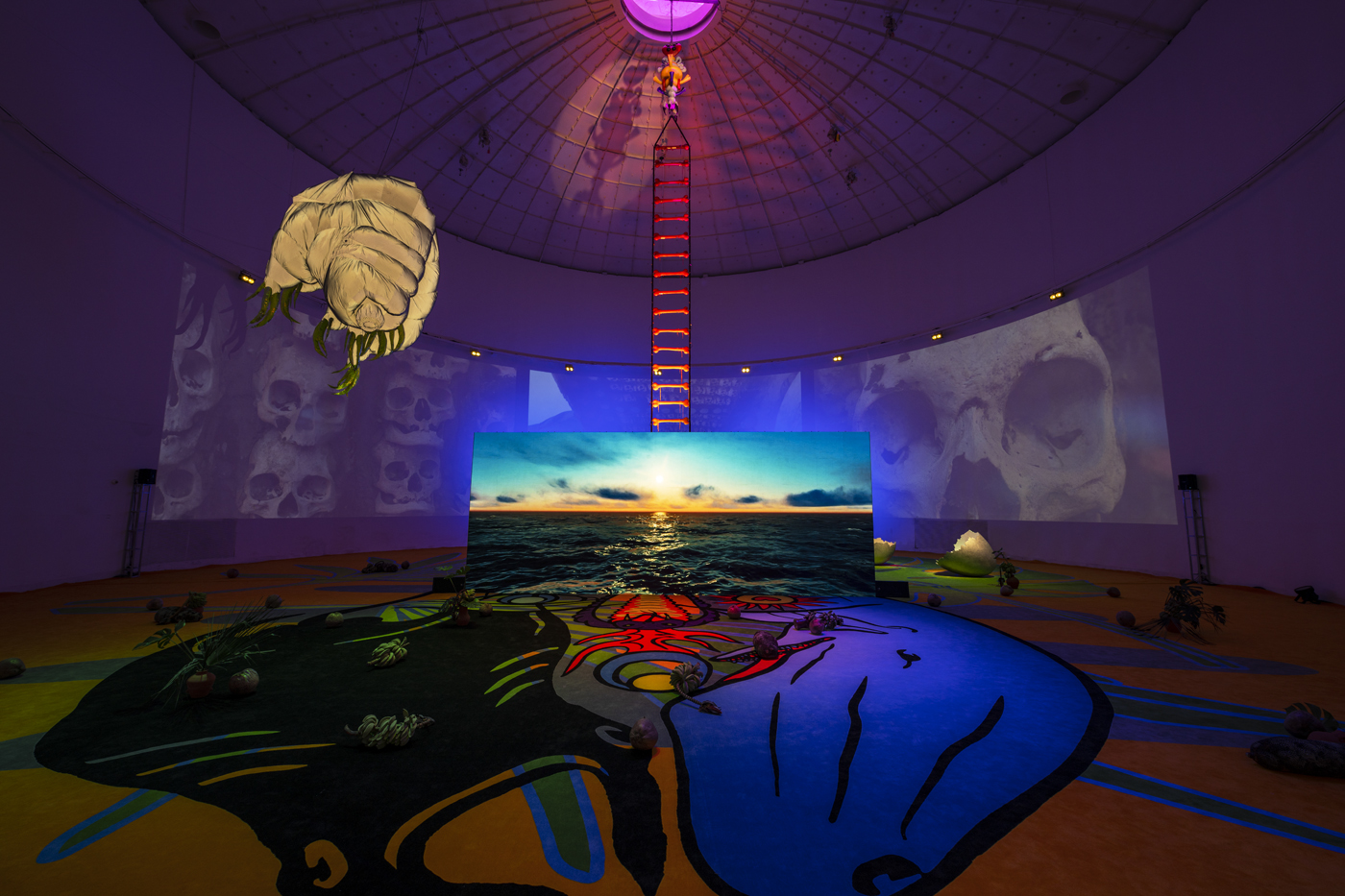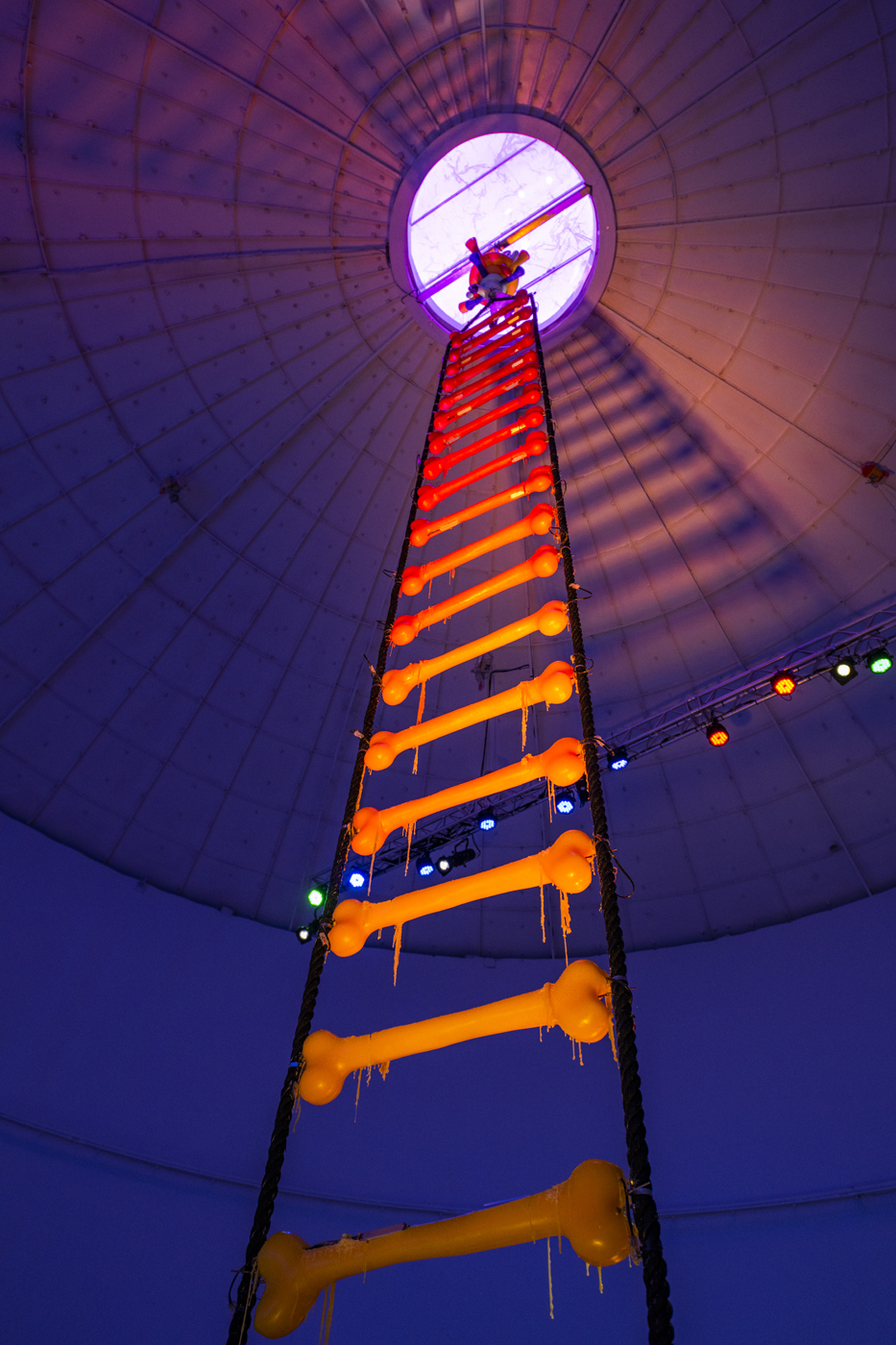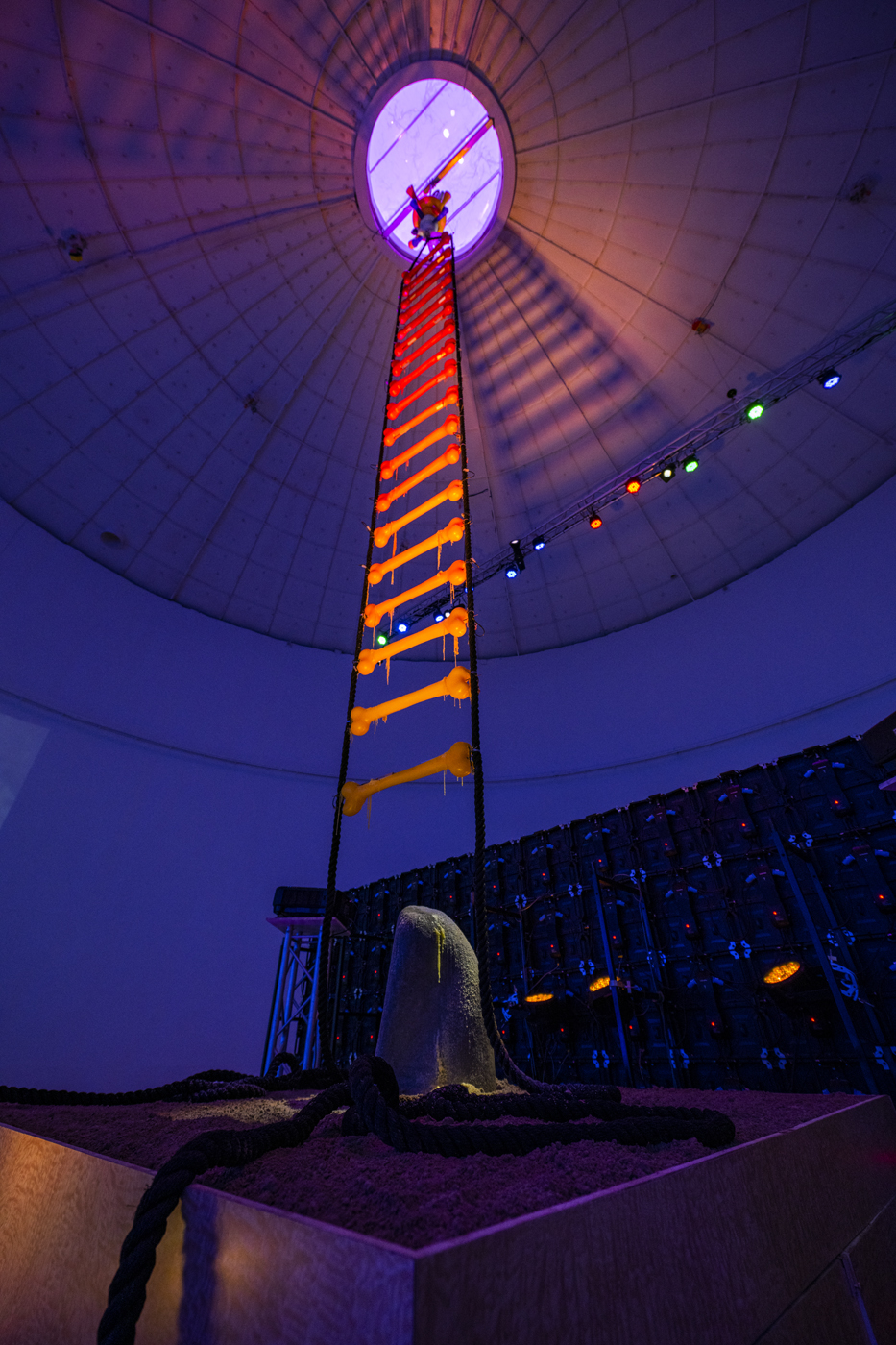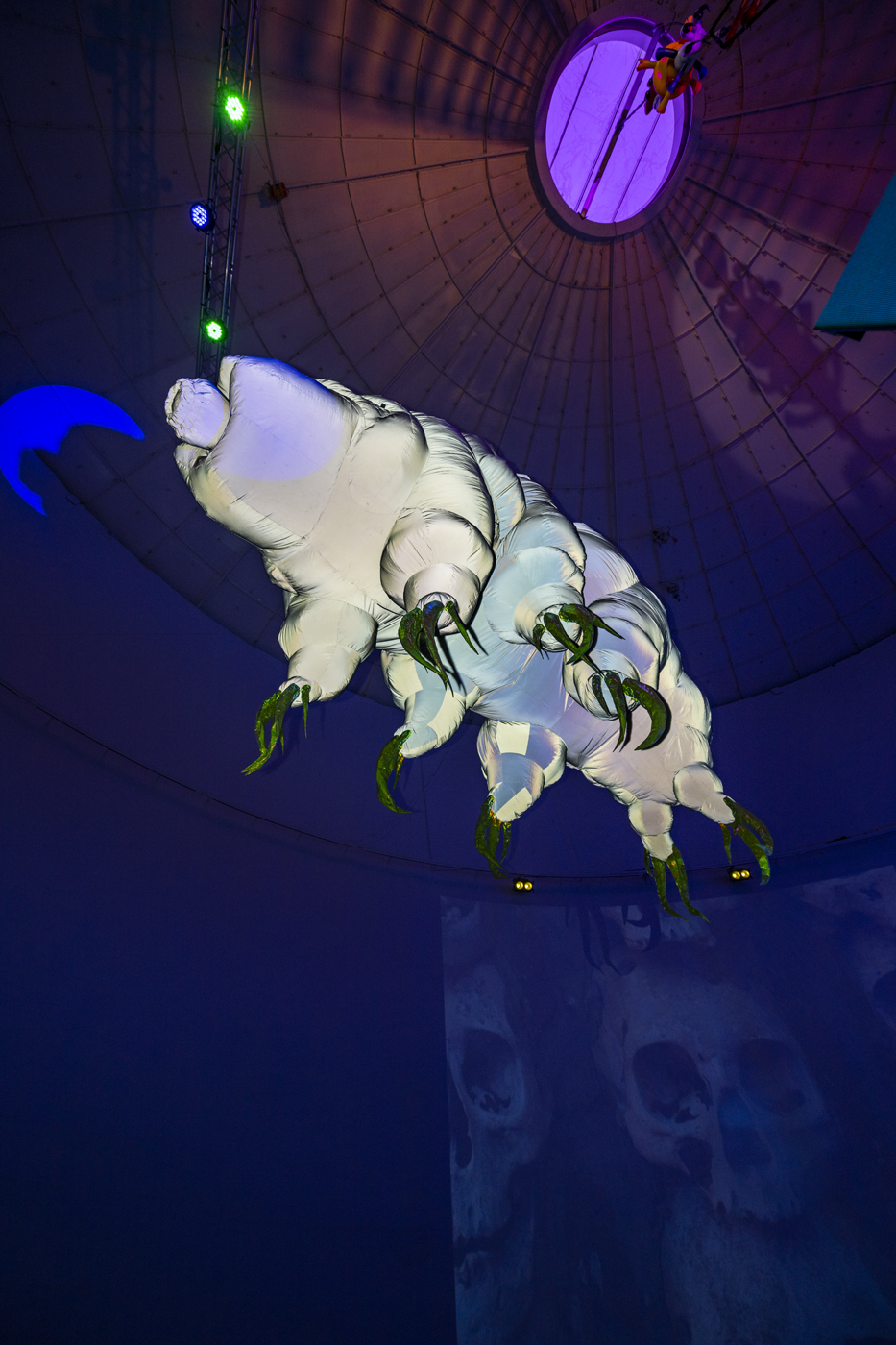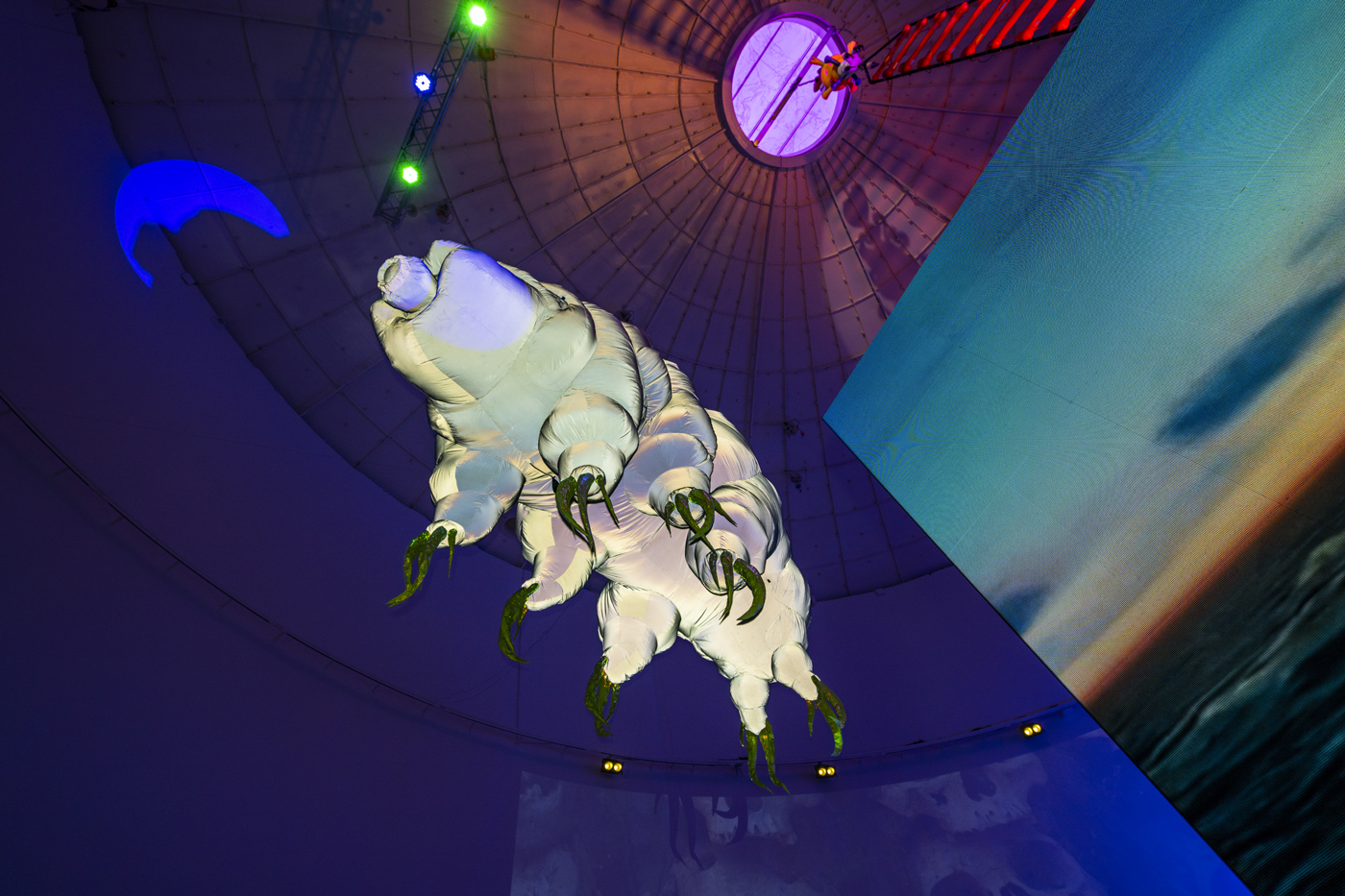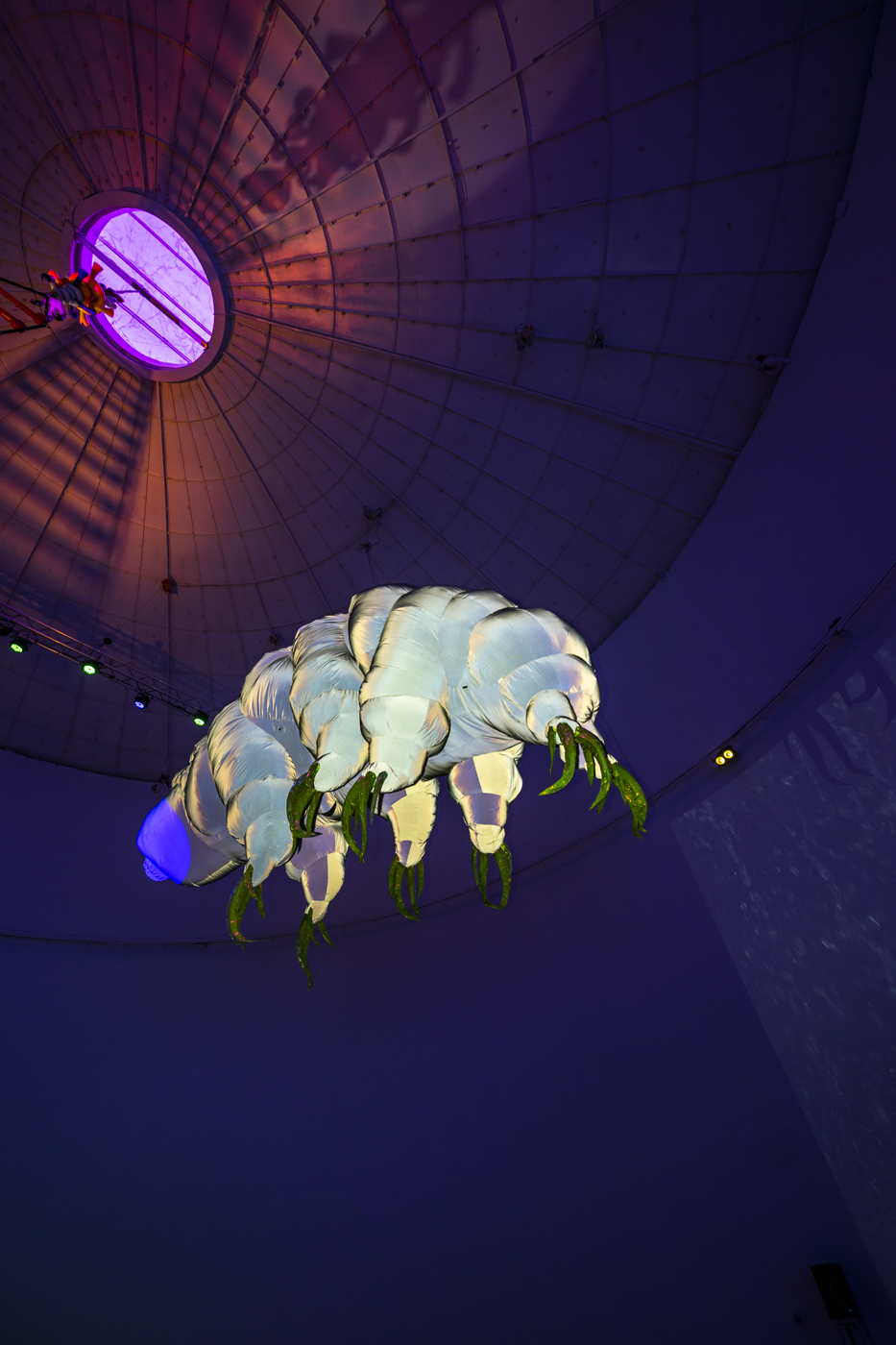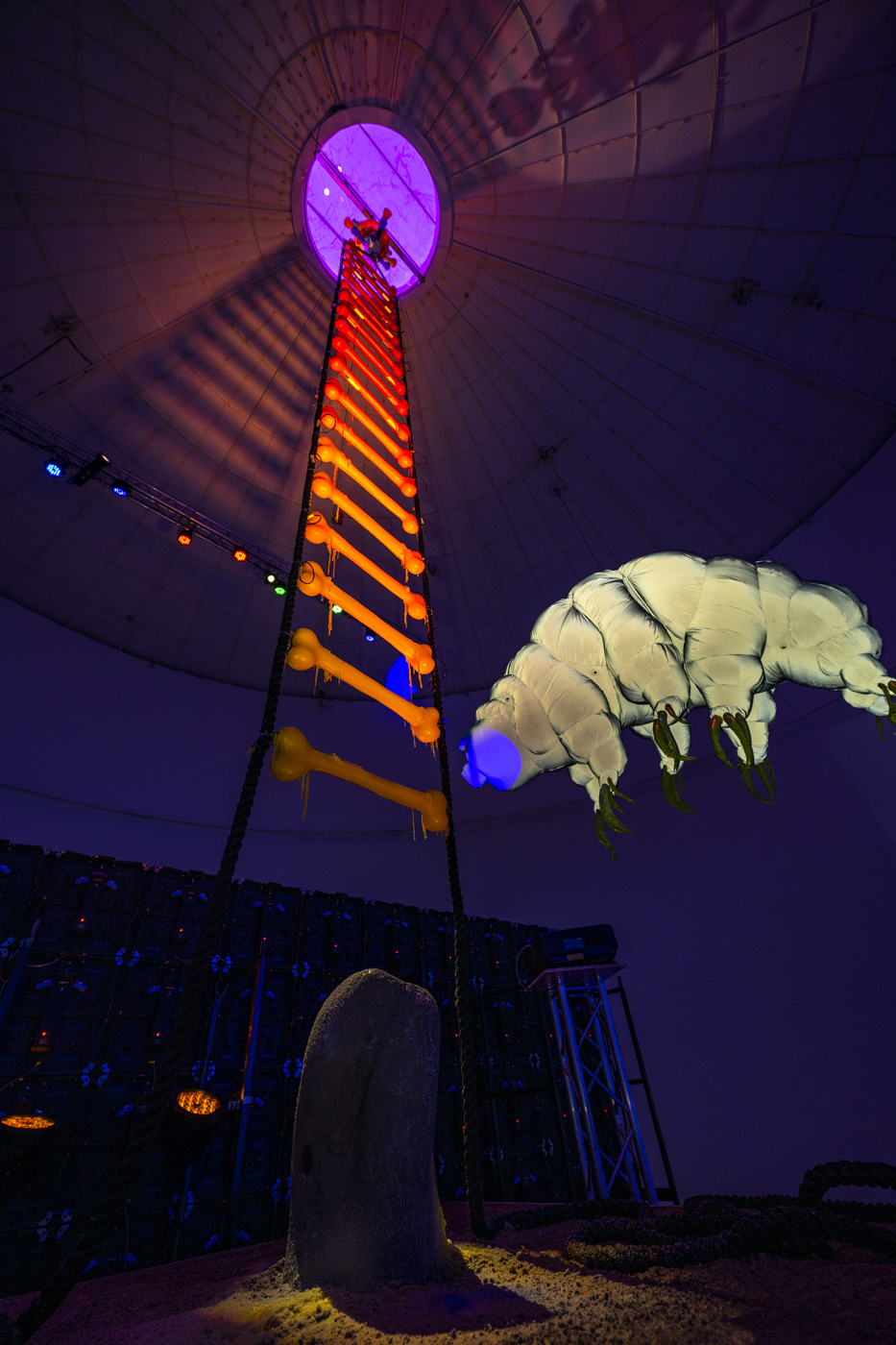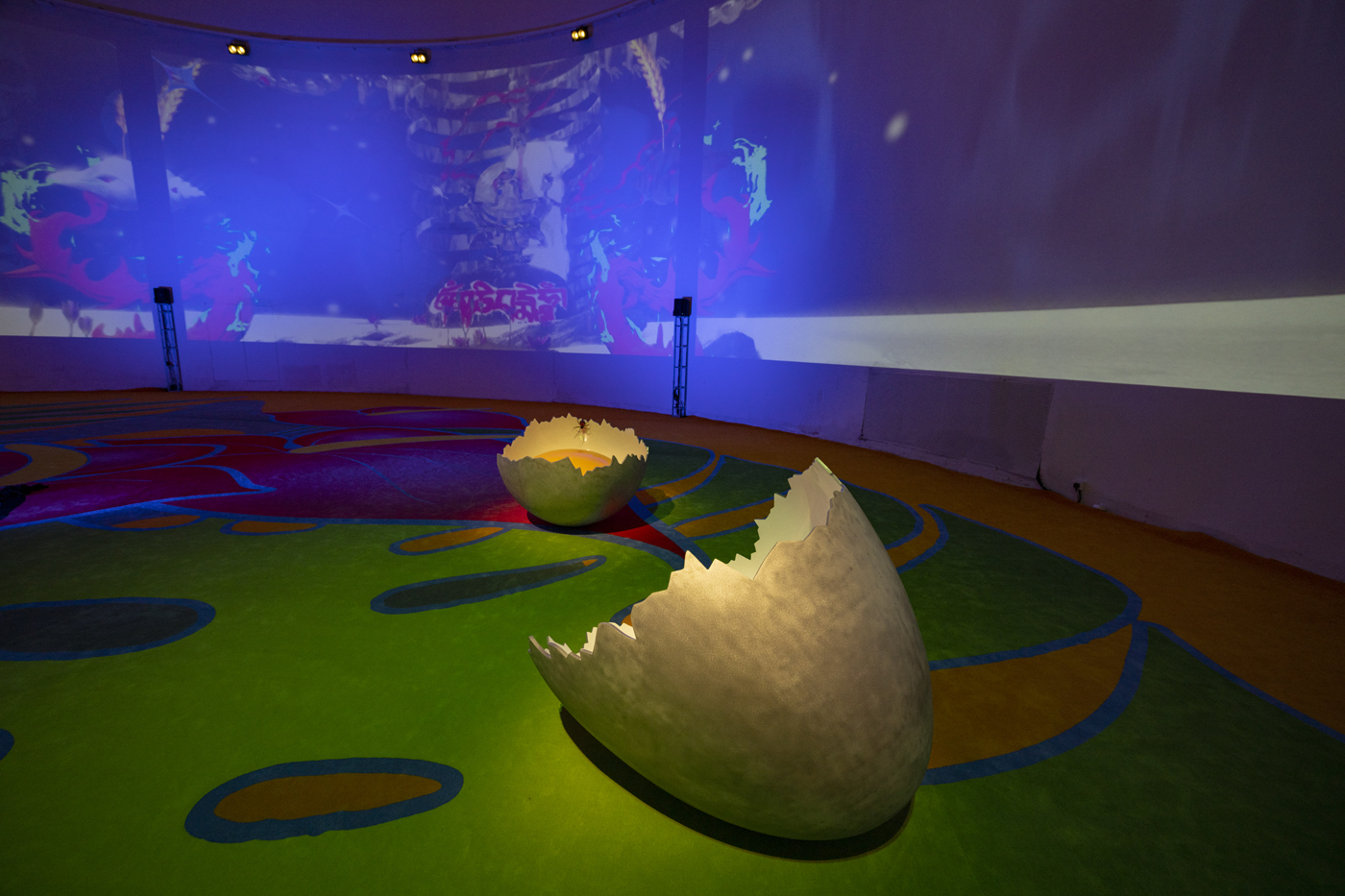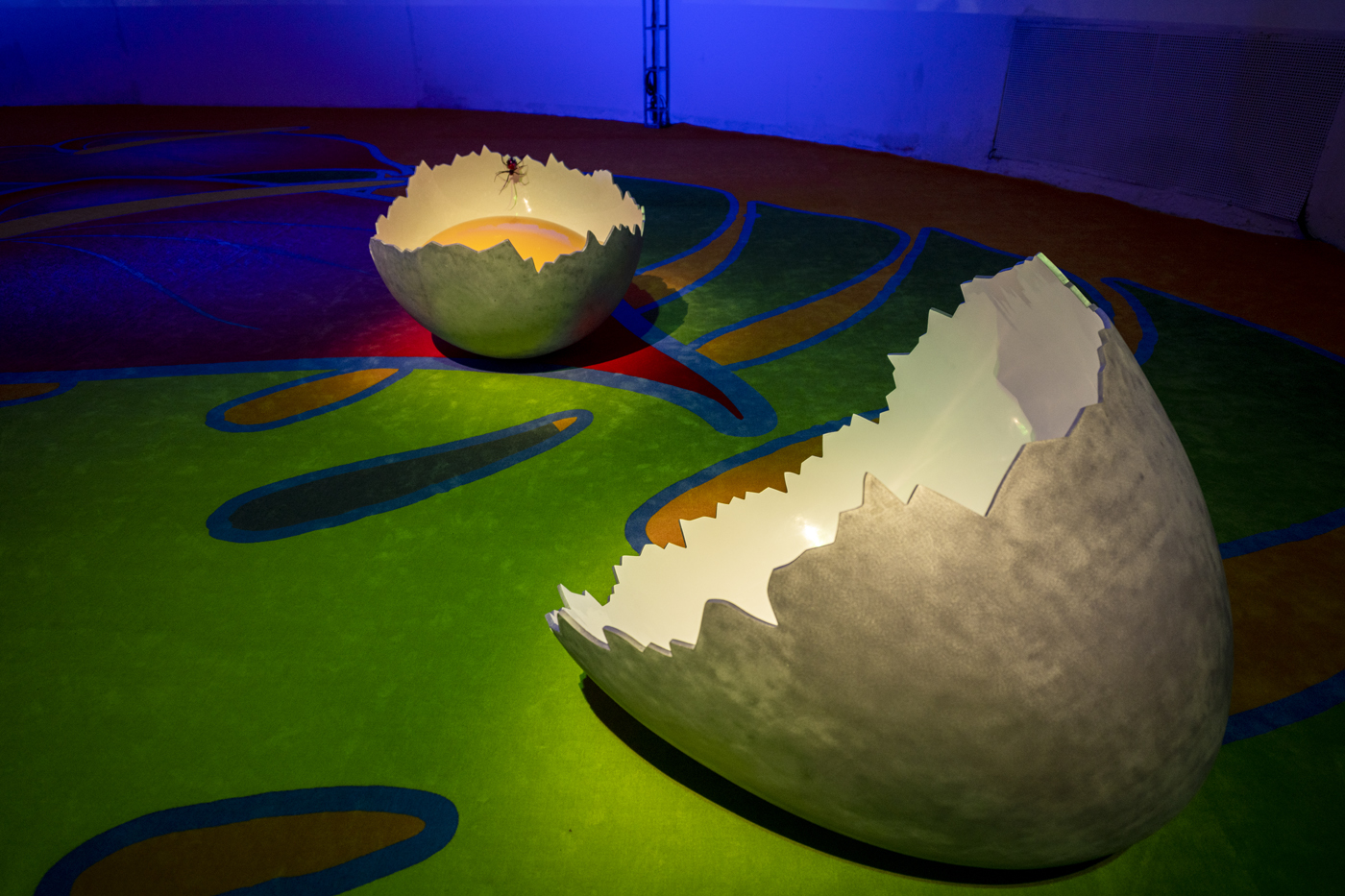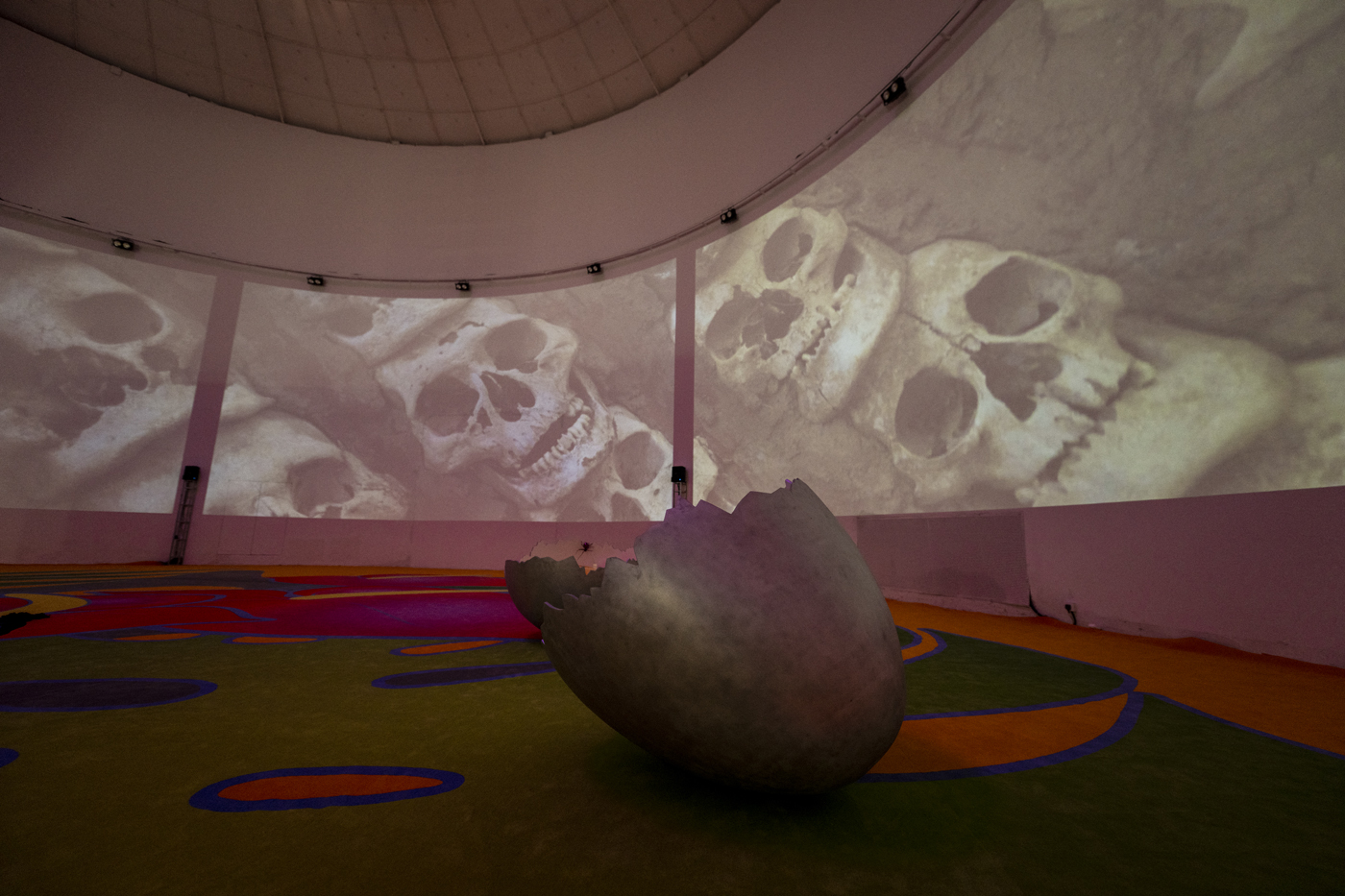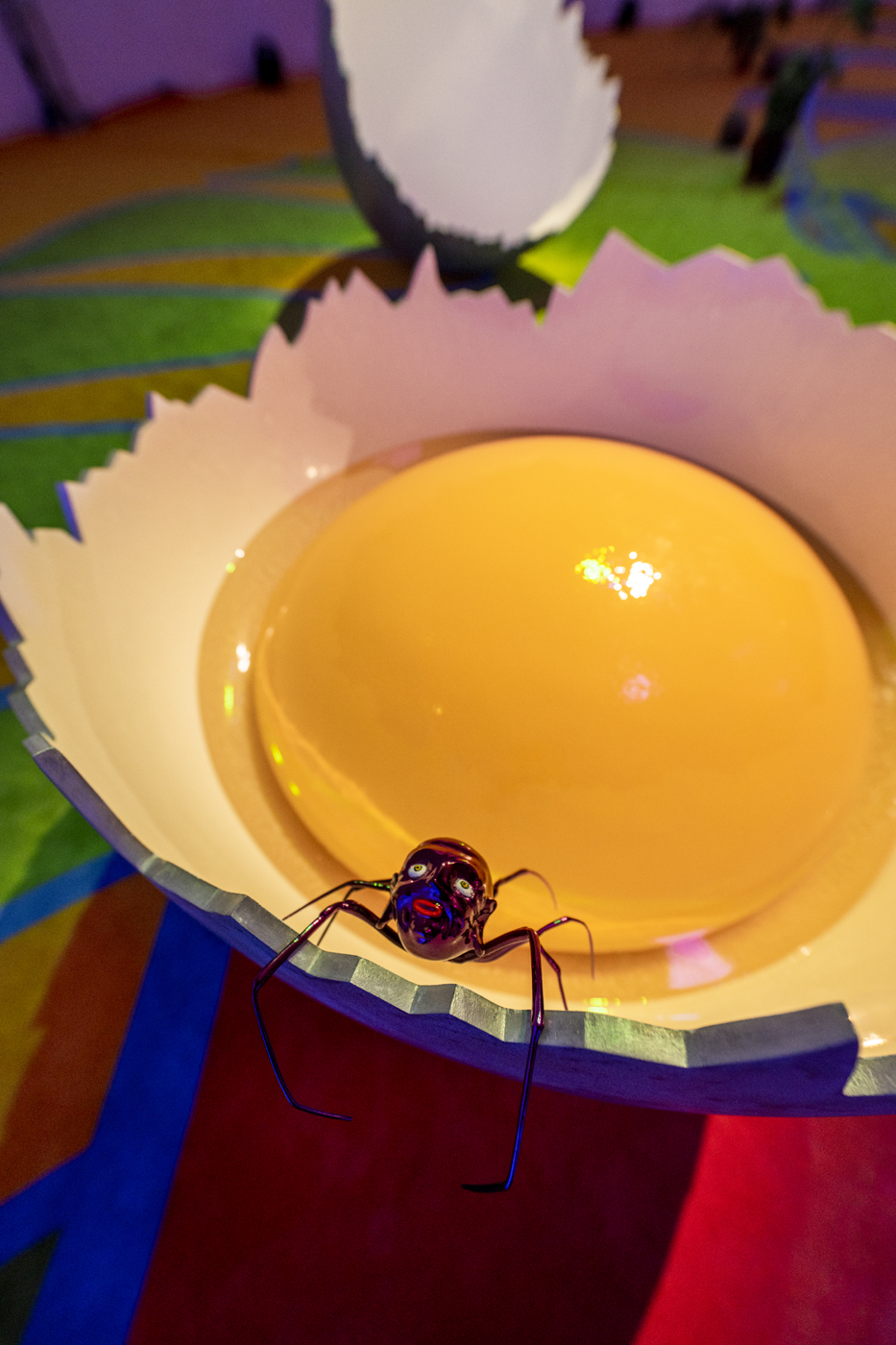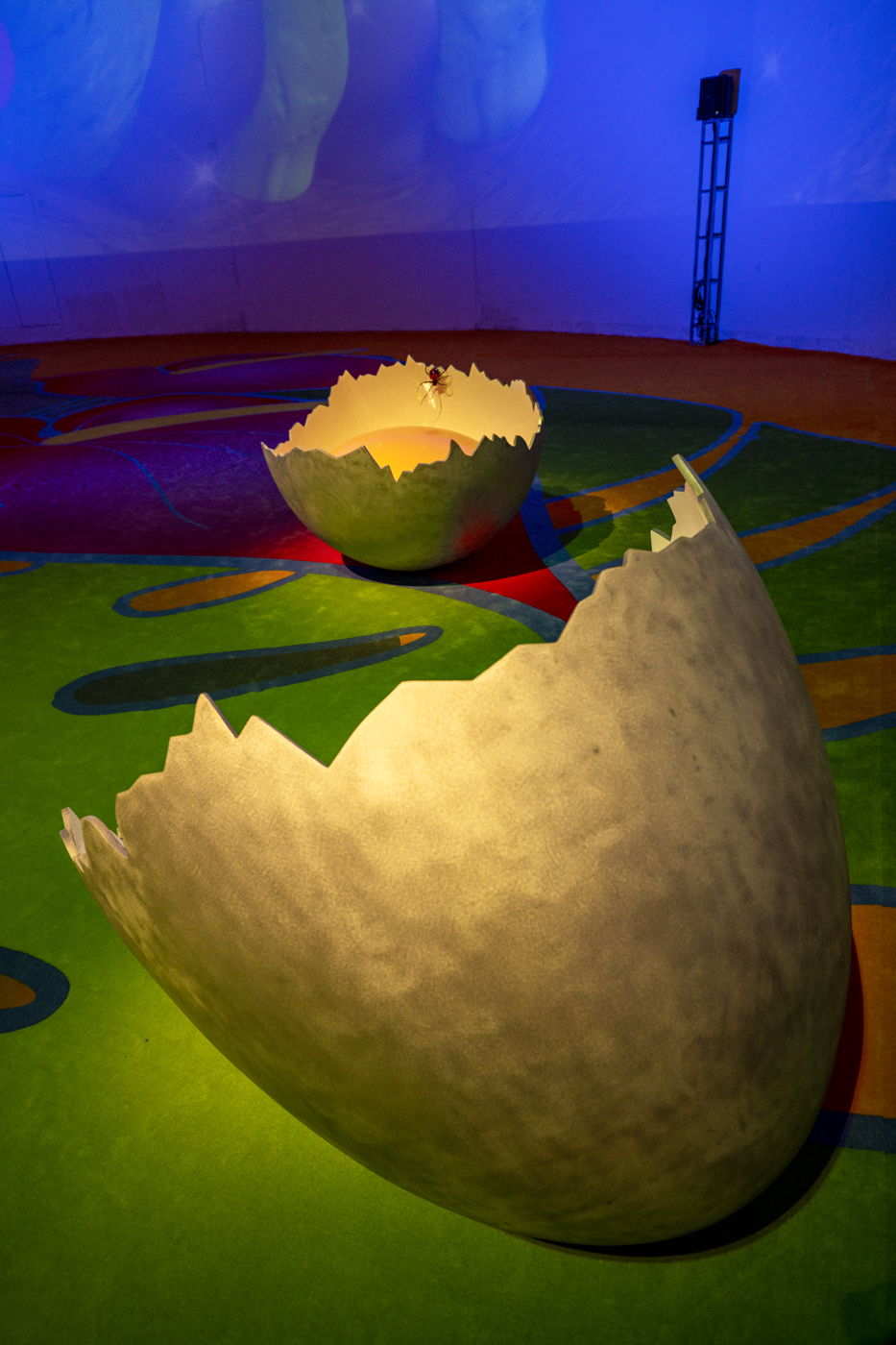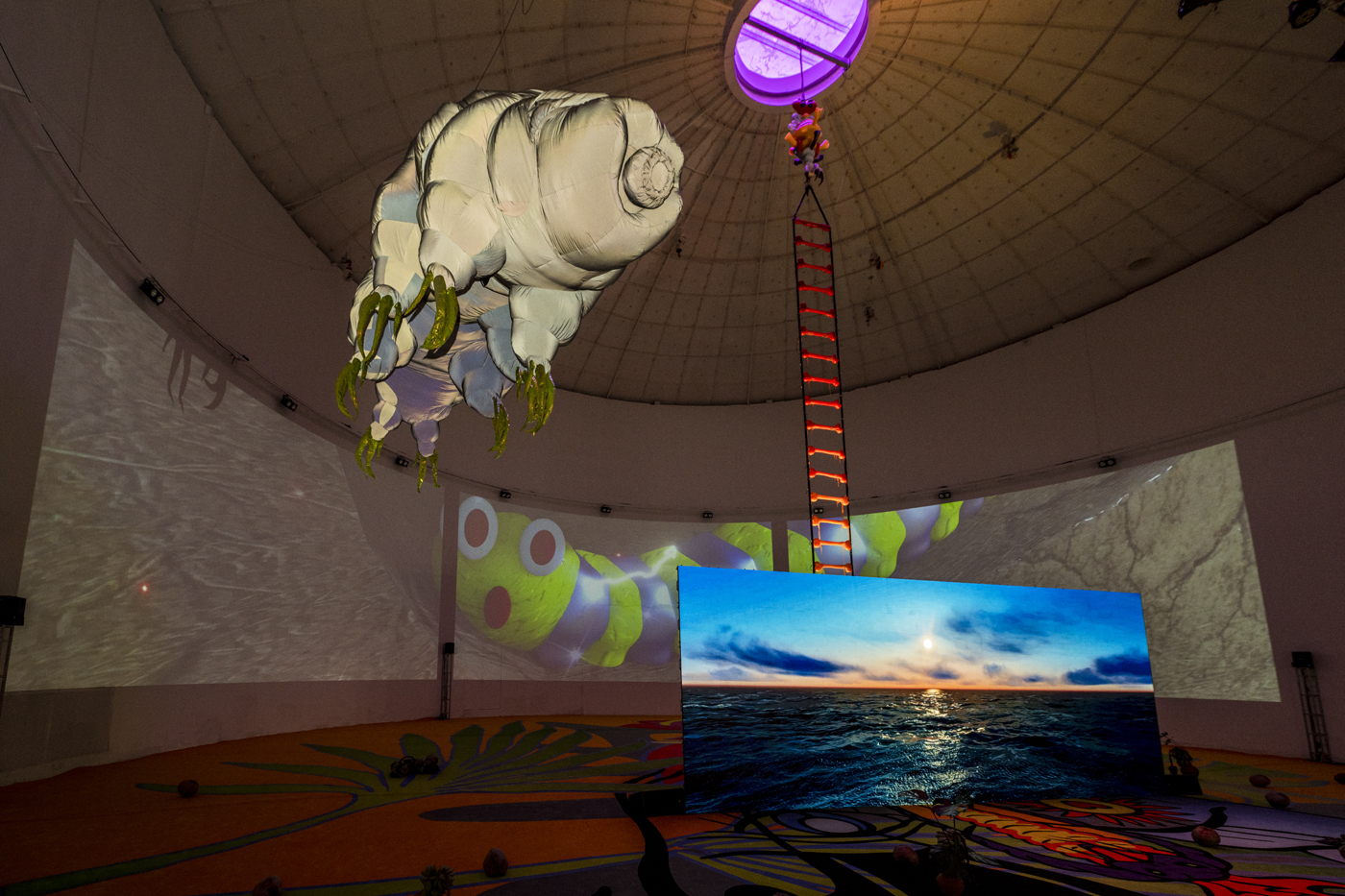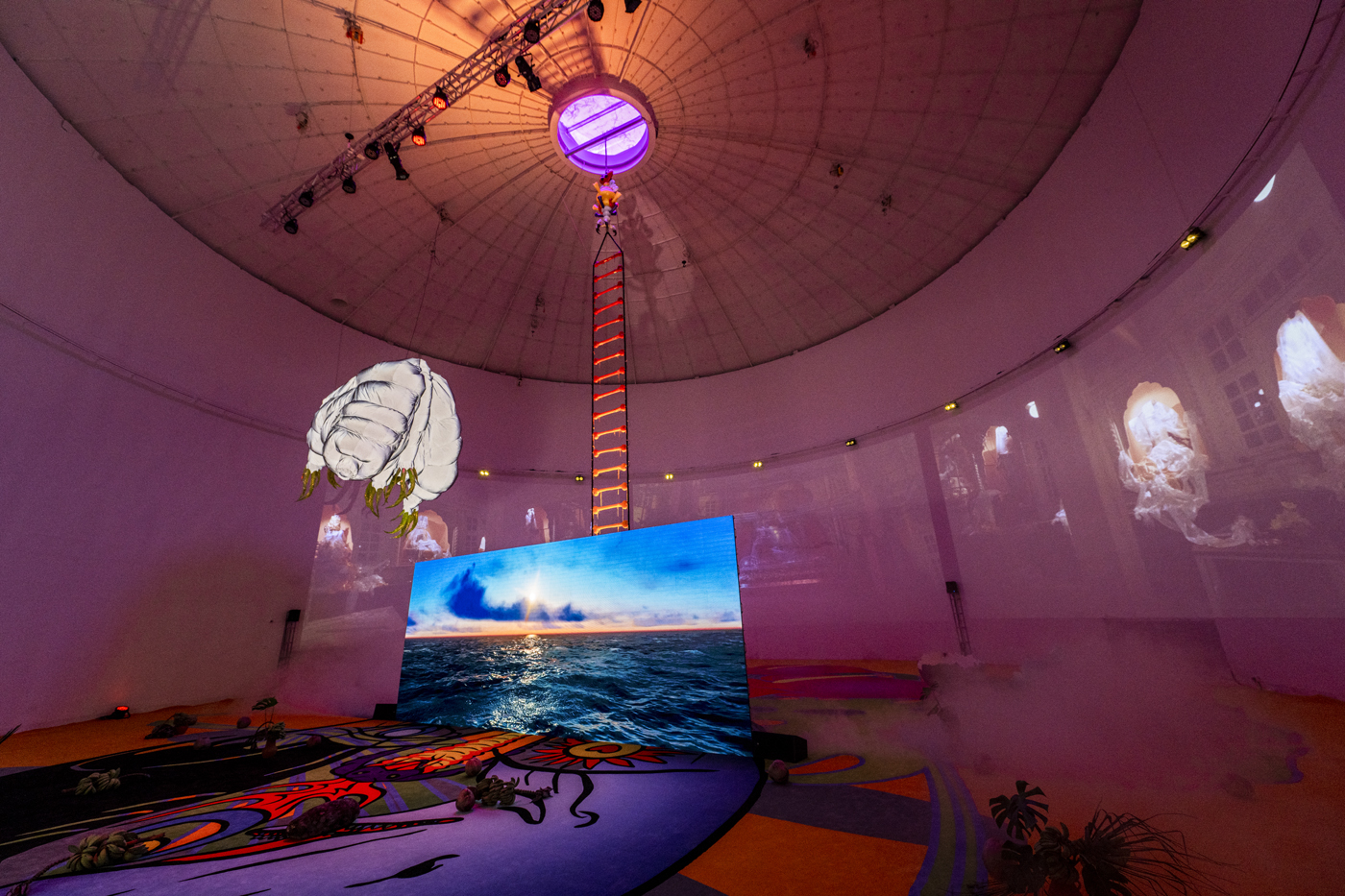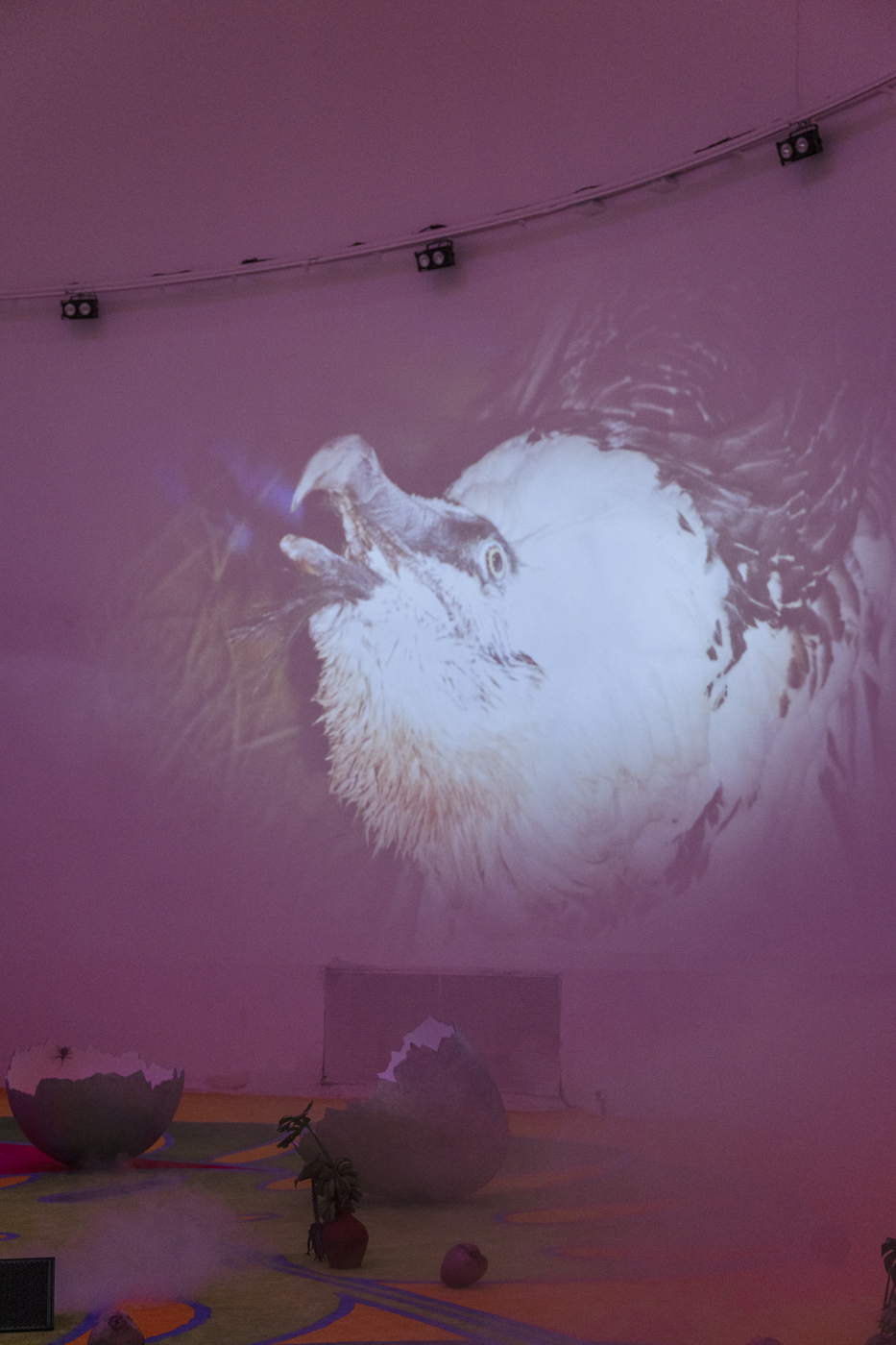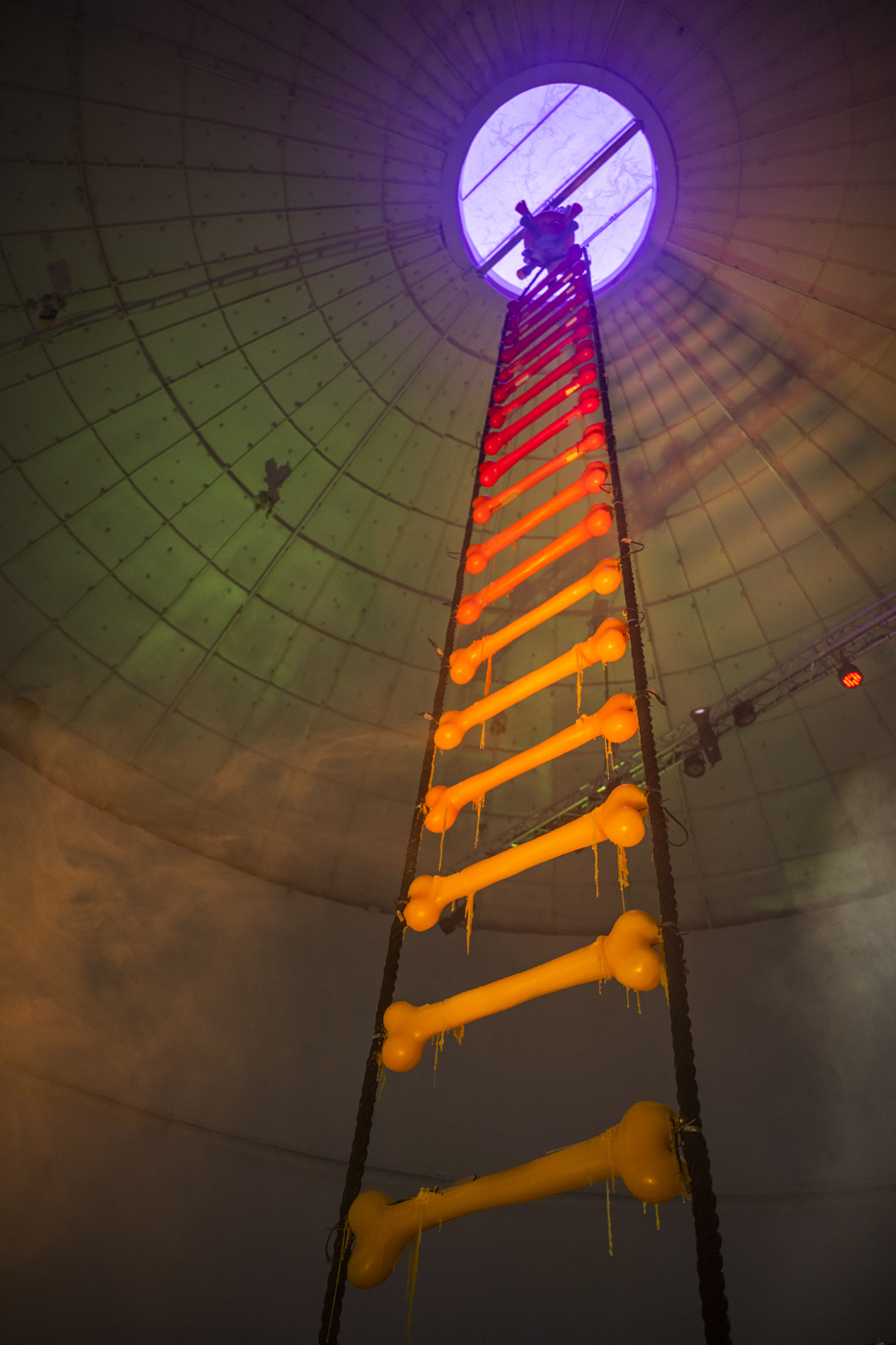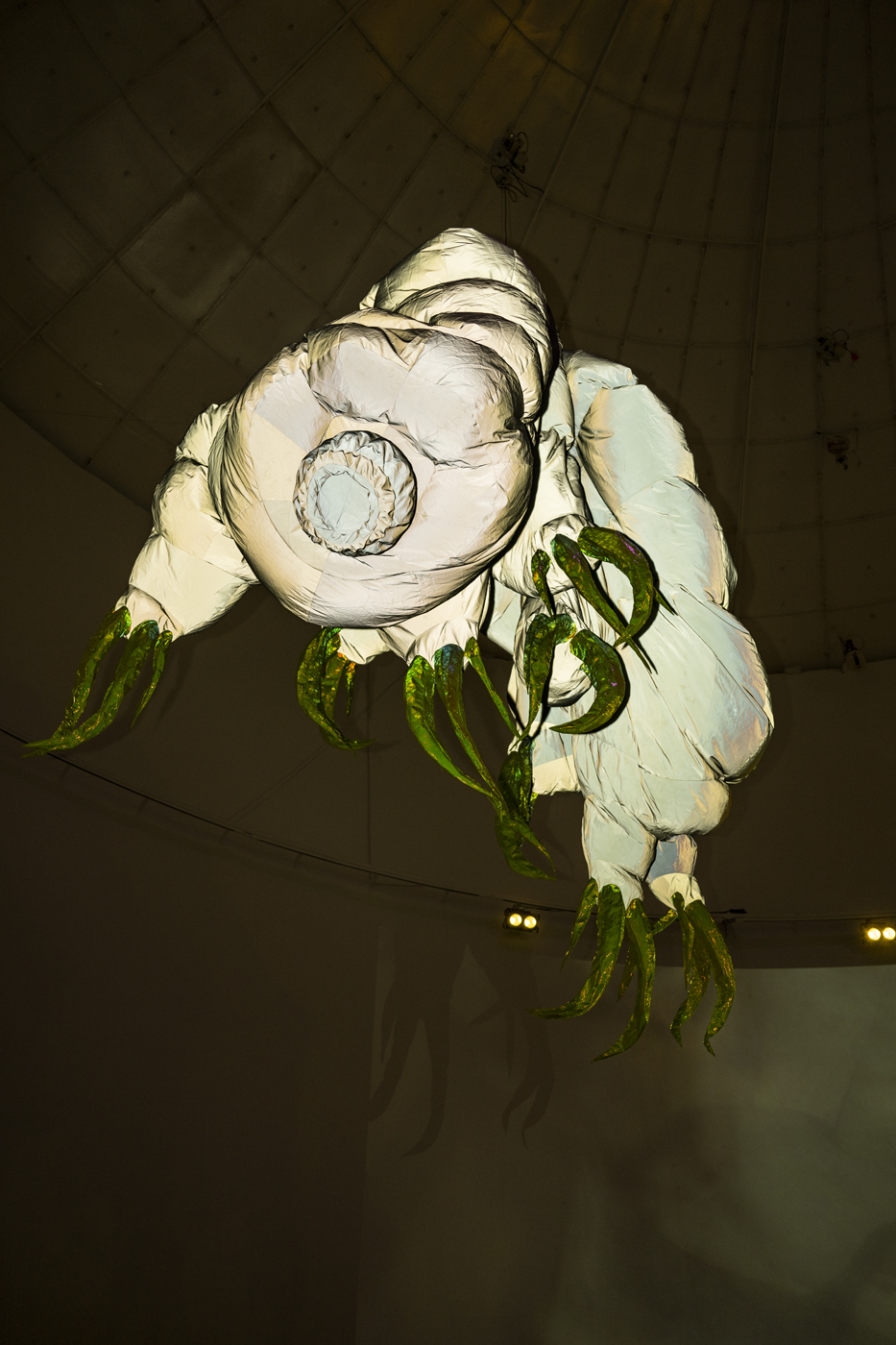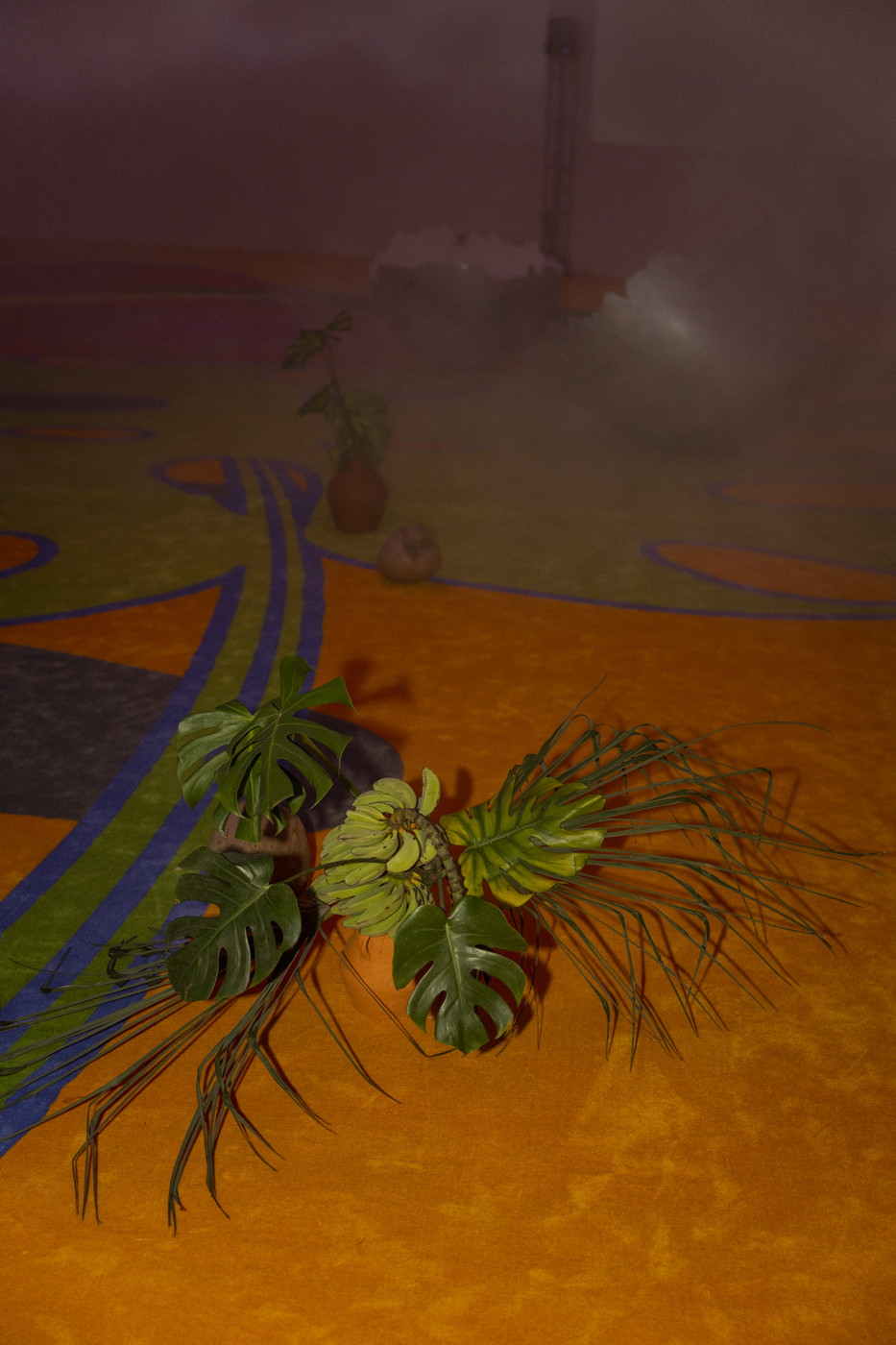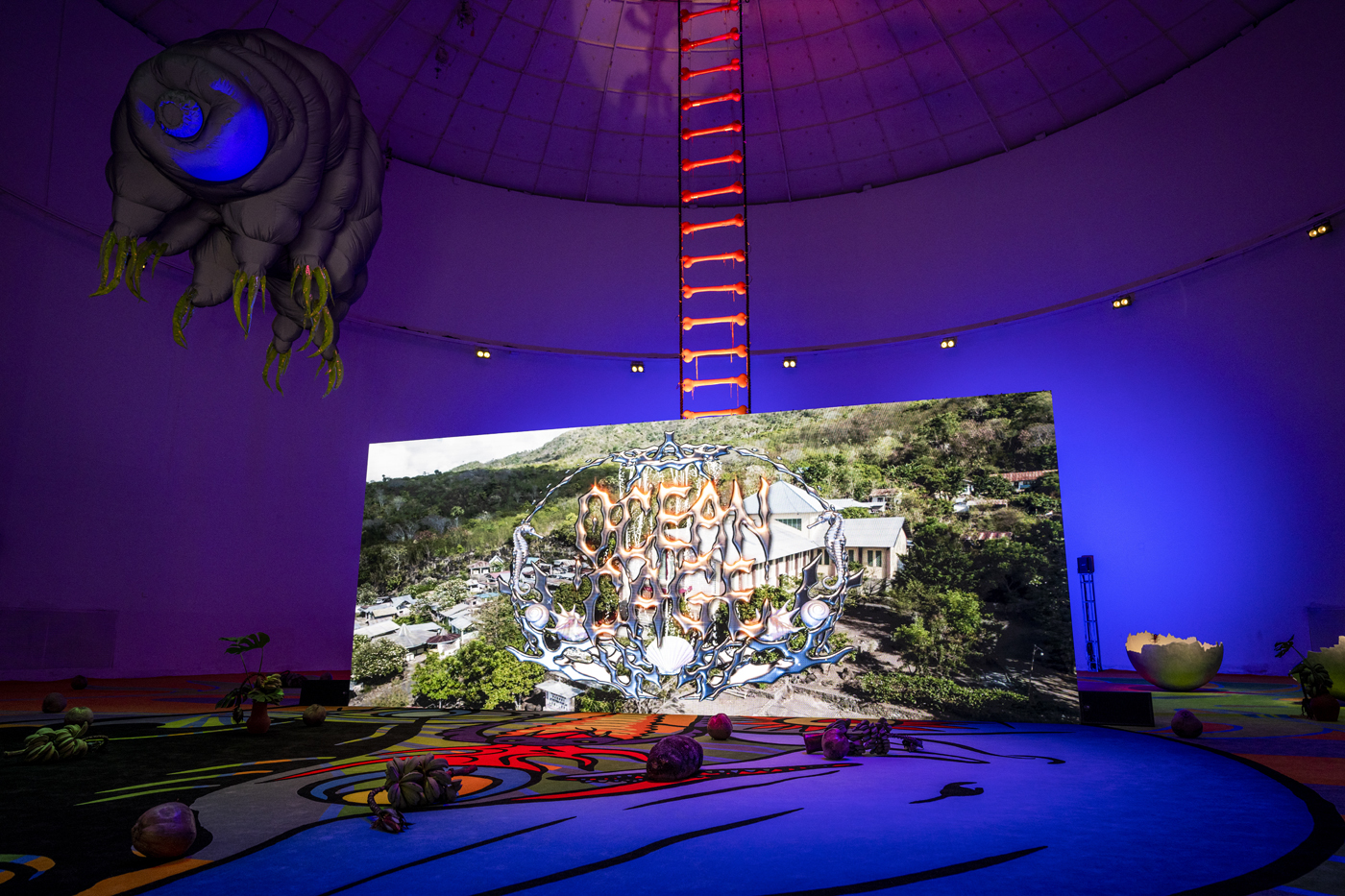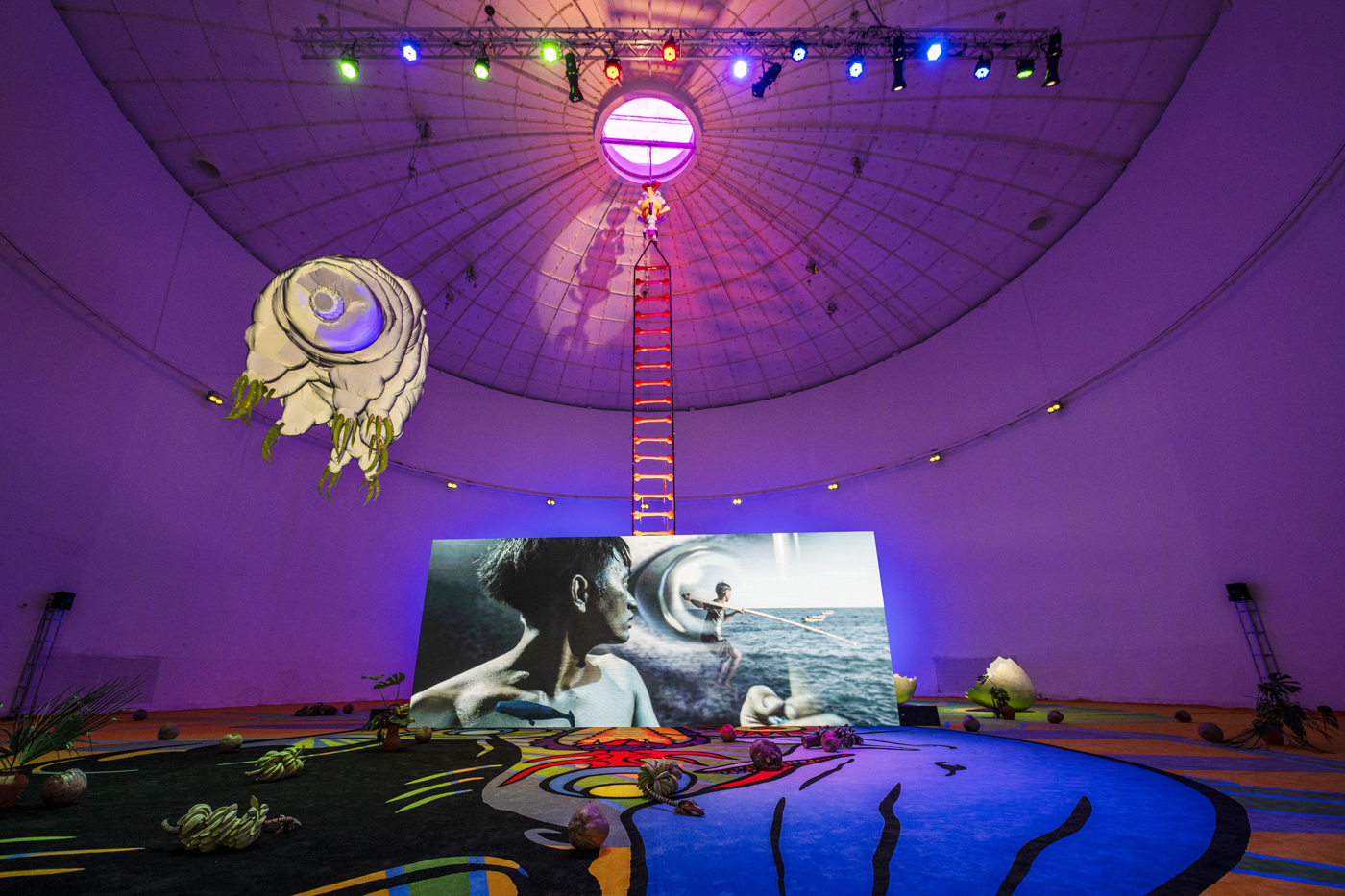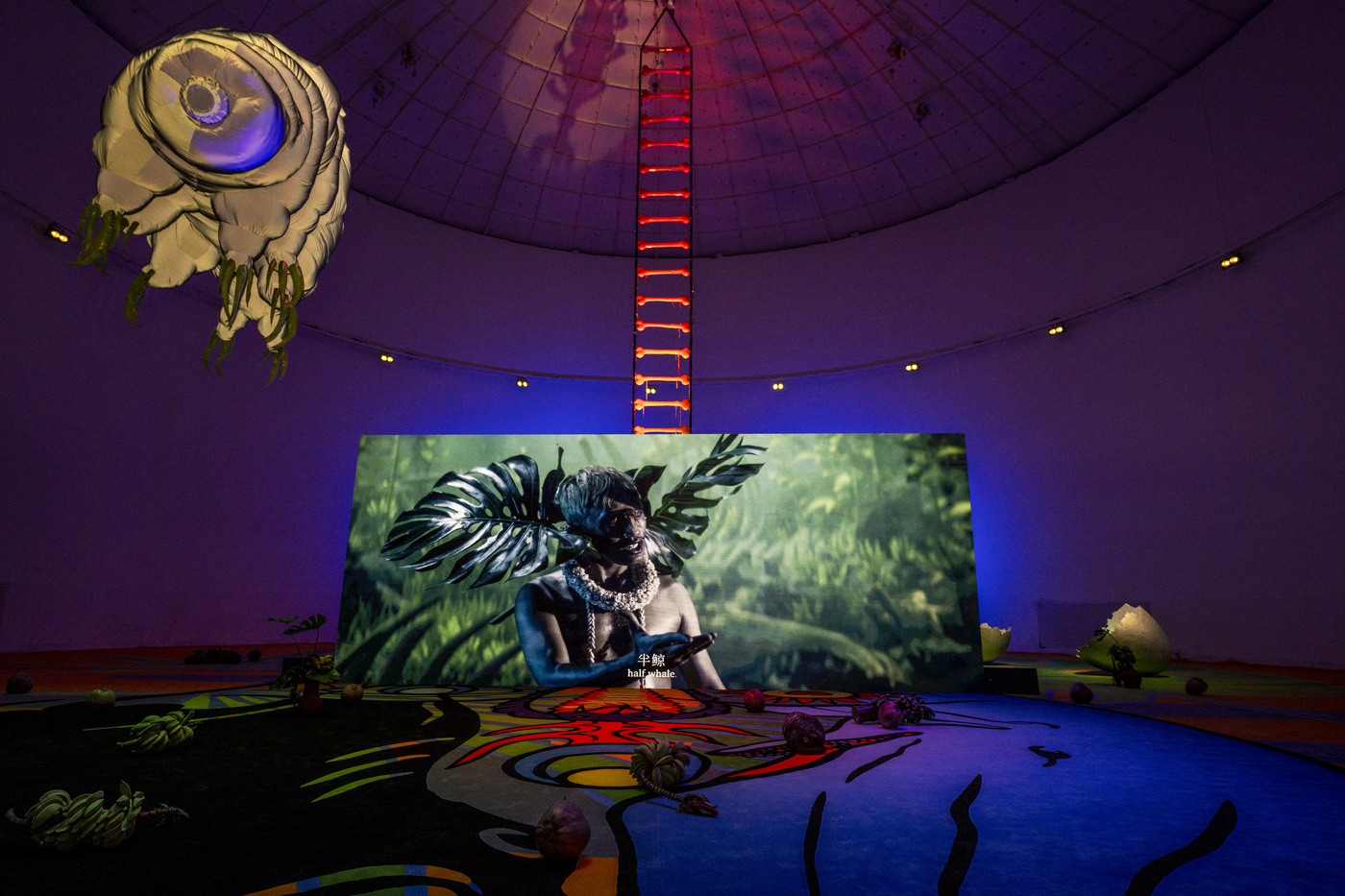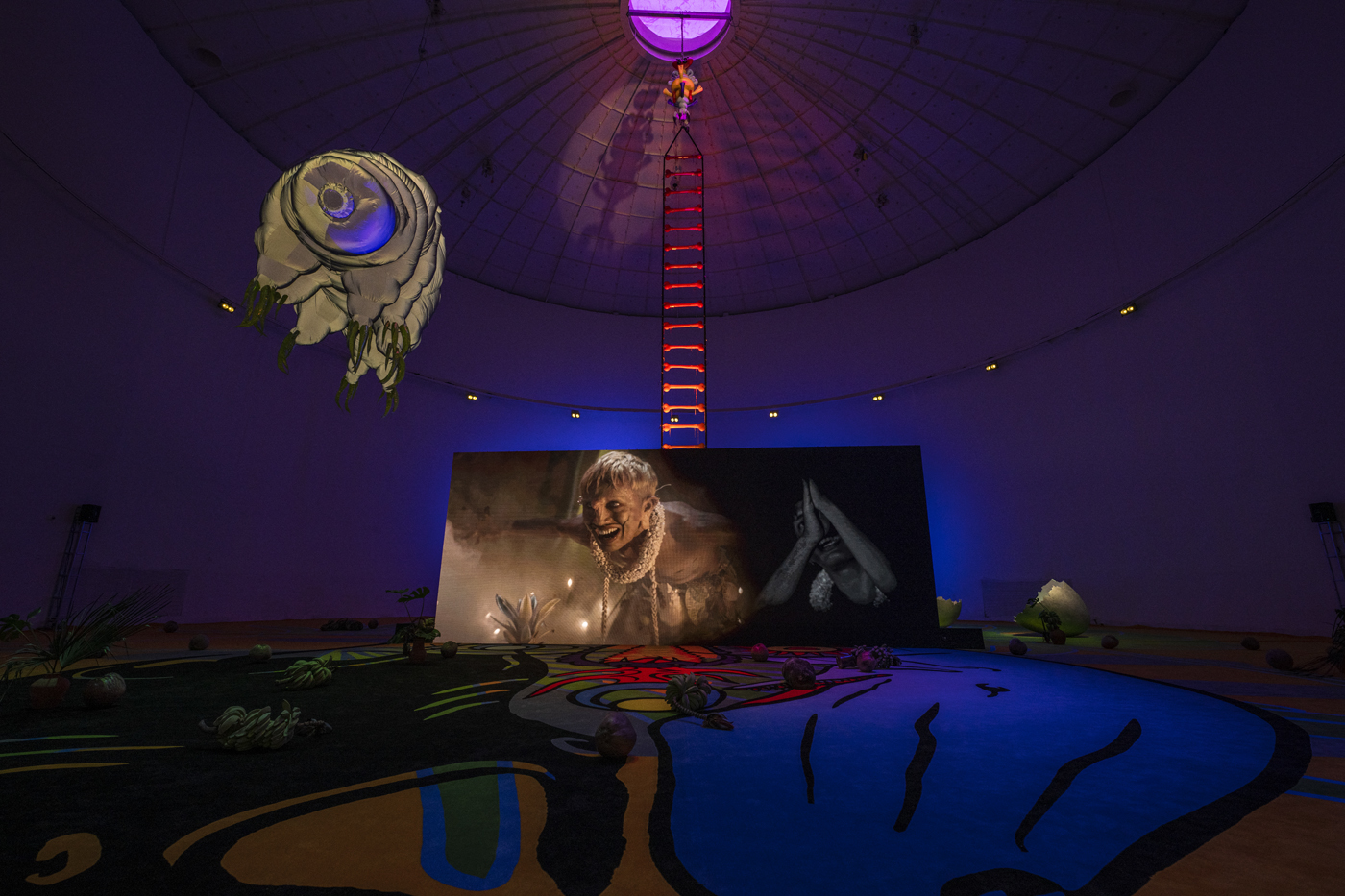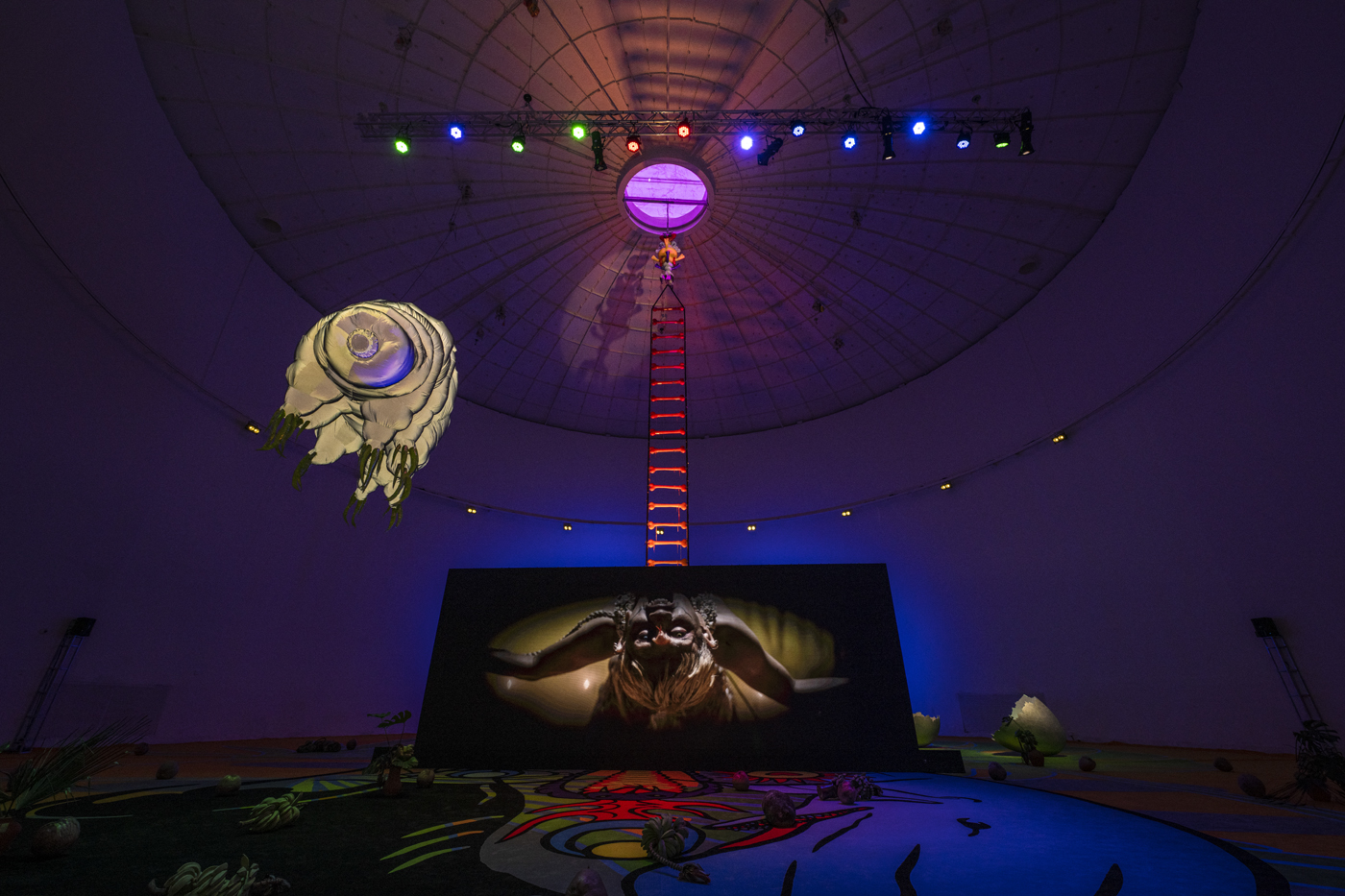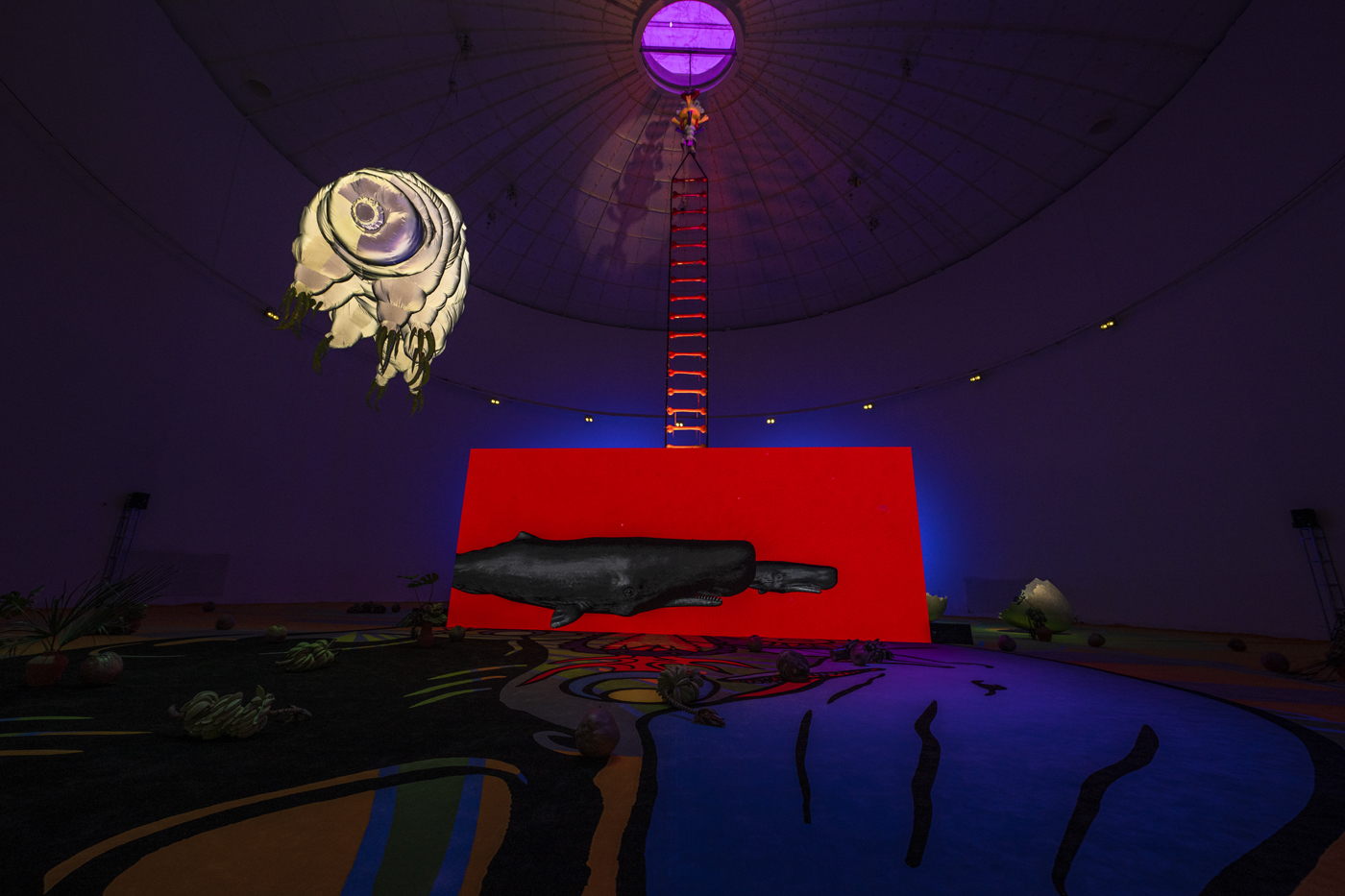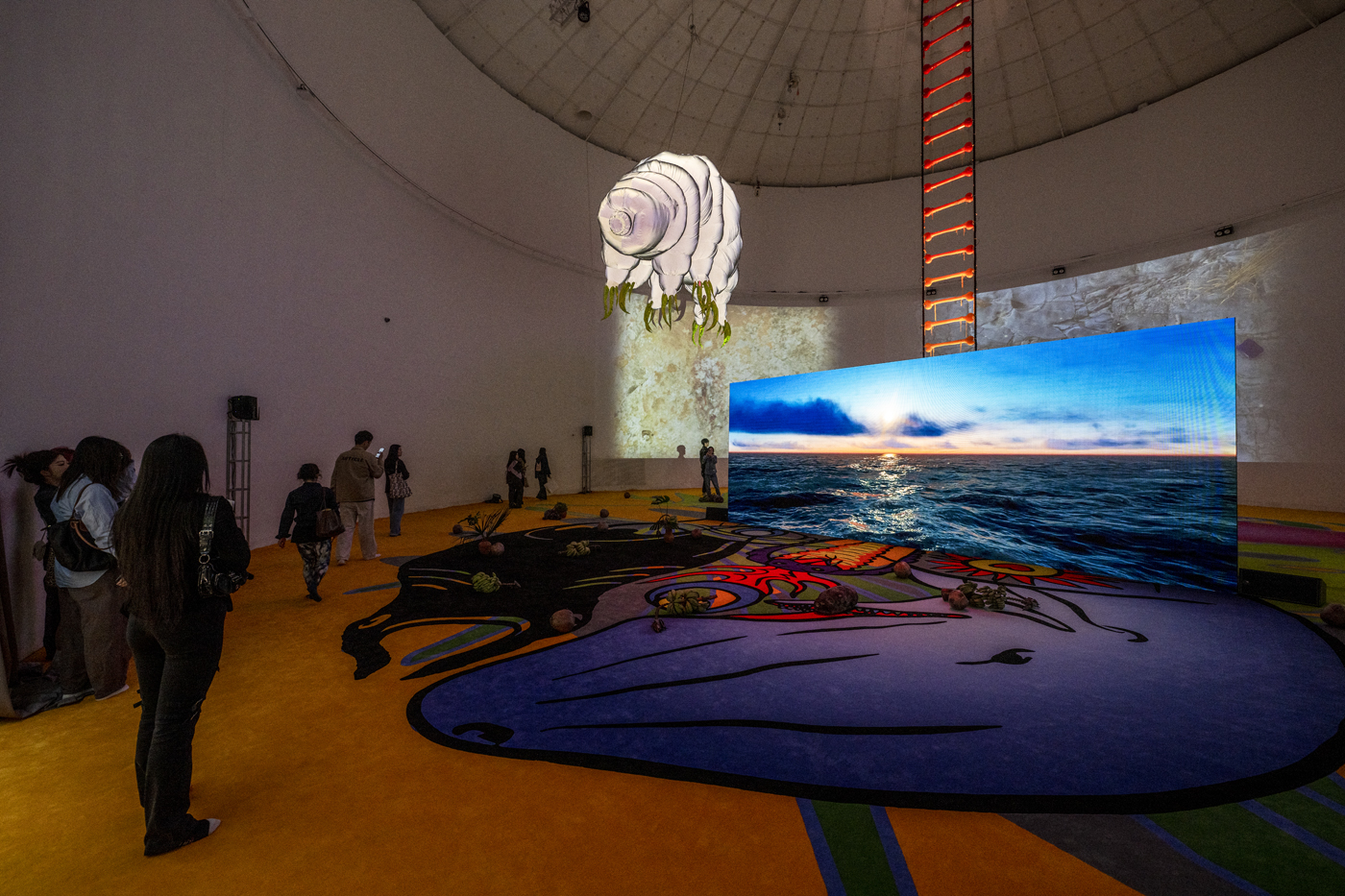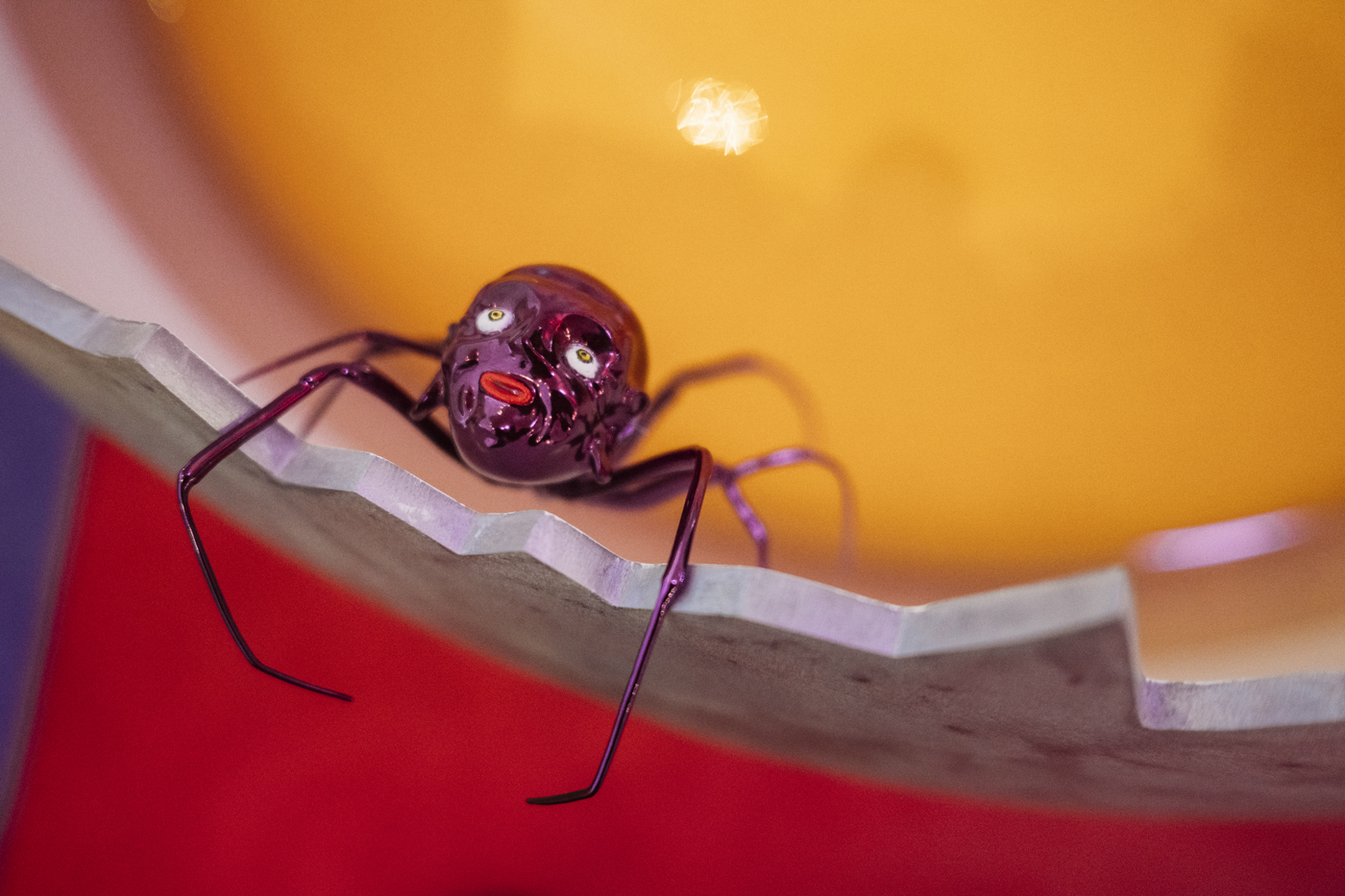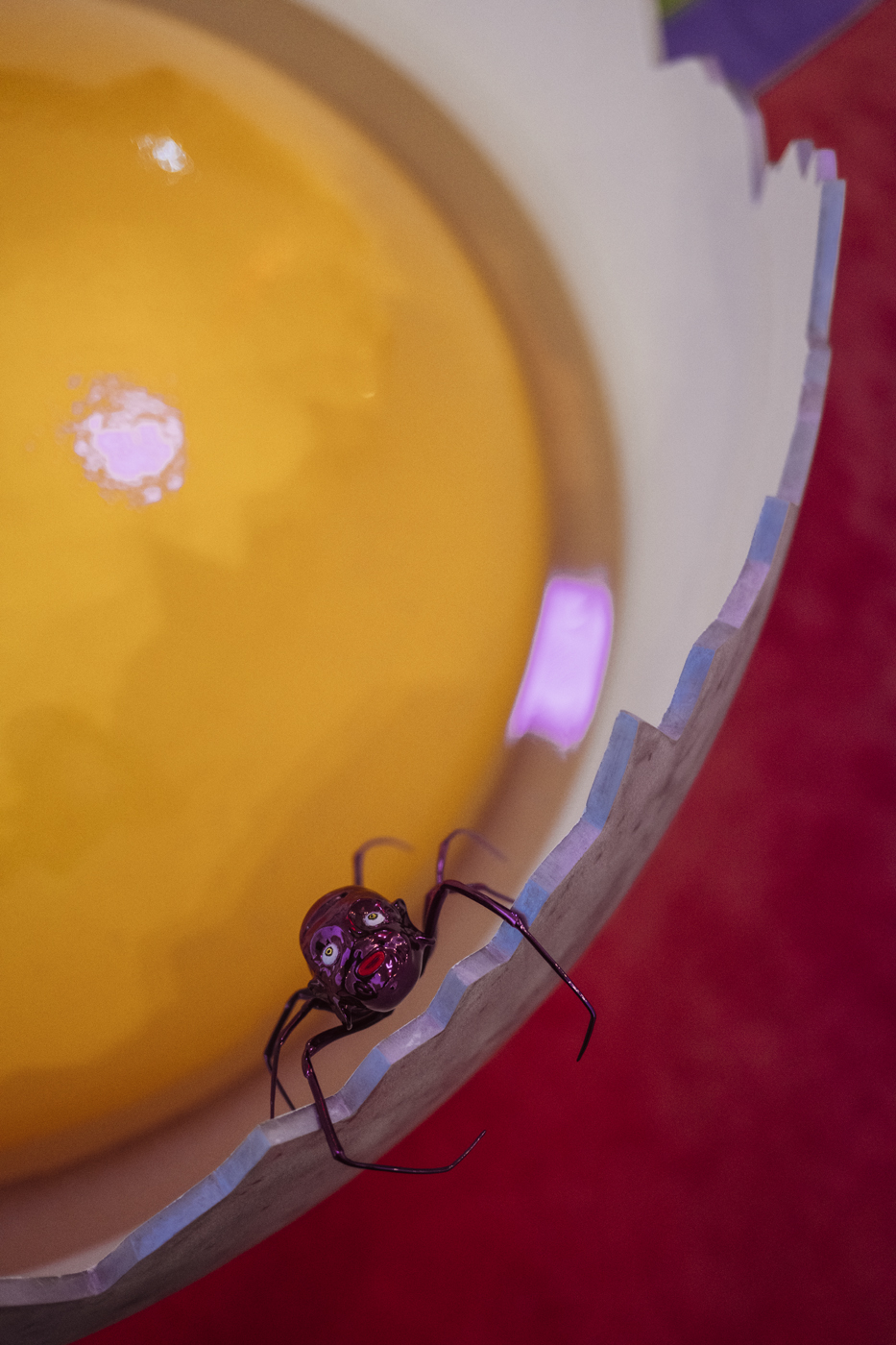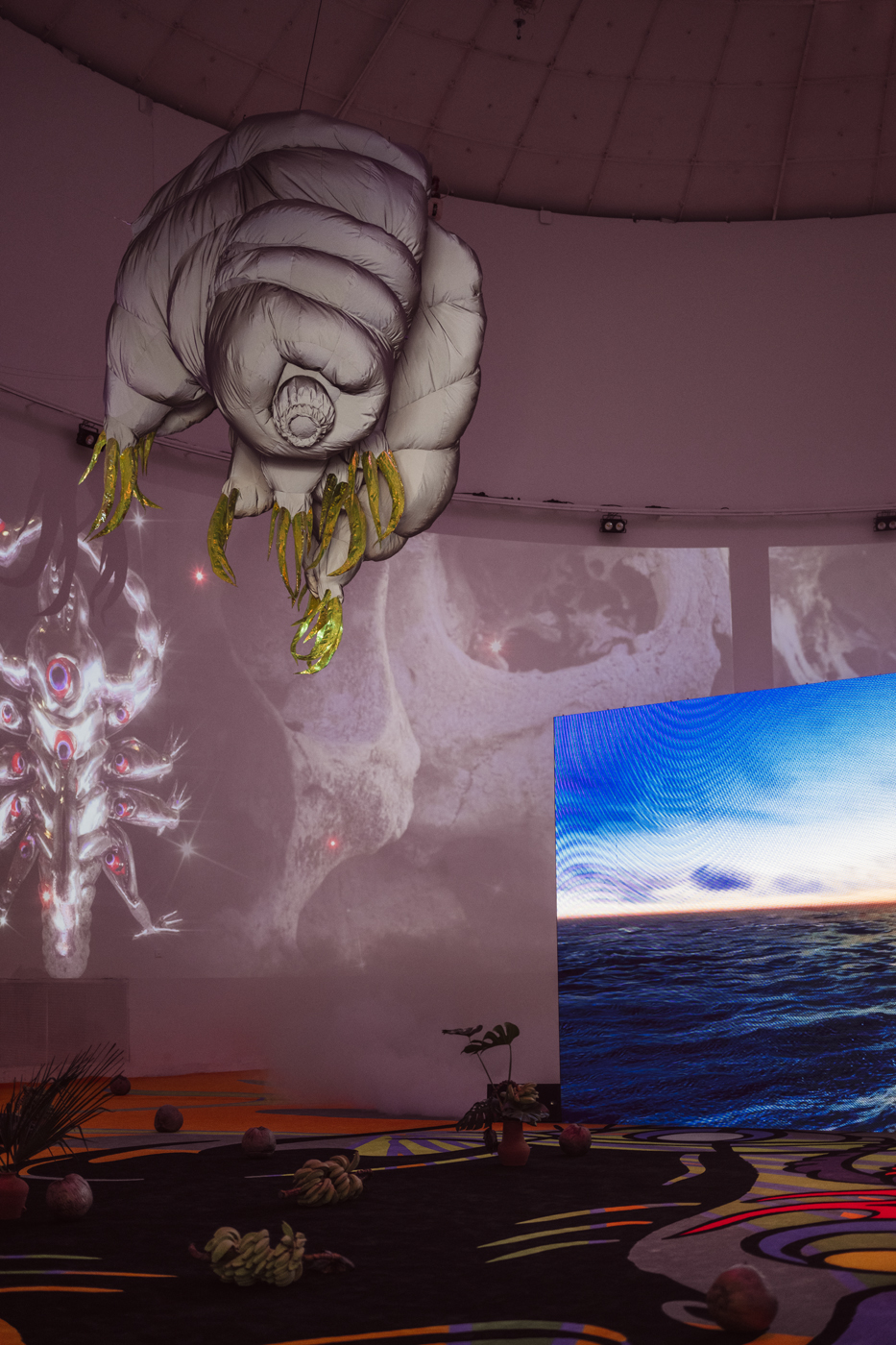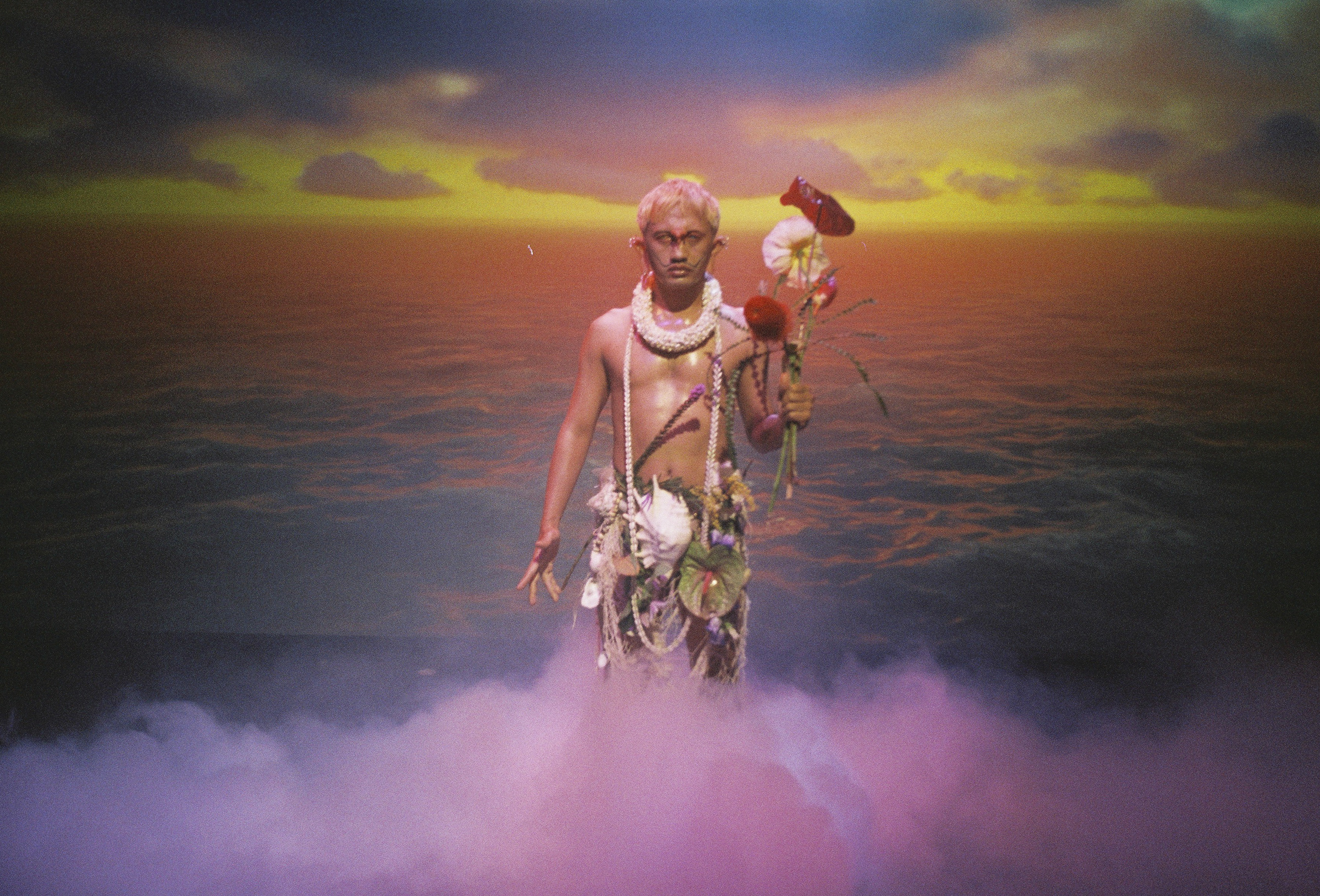山水 – Illuminated Spirits

Illuminated Spirits
Artist Chen Tianzhuo’s solo exhibition, Illuminated Spirits, unfolds with two projects, The Dust and Ocean Cage, that together propose ideas of cross-species and cross-life entanglement, presenting an allegory depicting an alternative relationship of humans within nature.
From the heights of the Tibetan plateau to the depths of the Indonesian sea, from the celestial burial ground at Damu Temple to the Sunday worship in the fishing village at Lamlera, from swirling vultures to the eye of the whale, from the scriptures chanted by monks to the ancestral mumbling generated by artificial intelligence… death, rebirth, wind, foam, debris, ghosts, beings, and nothingness are all simultaneously positioned in Illuminated Spirits, consisting of a continuous poiesis, and a cycle of reconciliation and life-energy mediation. In the exhibition, humans are not sinister, eerie, or uncanny; on the contrary, they are dispensable, abstract, and insignificant, merely a manifold thread intertwined with mountains, rivers, animals, plants, spirits, and machines. In this way, humans and nature are woven together and resonate with one another, constituting a symbiotic cosmos by co-emerging, co-dreaming, and weaving a specificity of ‘locality’.
If The Dust emphasises the eccentric separation of spirit and body and the sense of displacement of the embodiment at a particular time, then Ocean Cage proposes the role of the spirit as an ancestor. This ambiguous yet influential narrative shines an illuminated light on the struggle of the fishermen of Lamlera – faith, food supply, economic and social life, as well as the spiritual and cultural crisis of the post-colonial context – all of which are caught in the ideological rift.
With a more-than-human perspective, the Illuminated Spirits probes into the ethical imagination and cultural conflict presented among the convoluted life forces in the current post-human reality. Through ritual studies, video installations, and performances, it explores the diverse definitions of existence, the forms of spirits, (non-)material forces, and the complex relationship between indigenous culture, ecology, and contemporary civilisation.
山水(Illuminated Spirits)
艺术家陈天灼的个展「山水」以《尘埃》与《海笼》两条作品线索展开,提出了跨物种、跨生命的纠缠,呈现了一则寓言,描绘了人内化于自然的另类关系。
从西藏高原到印尼深海,从达姆寺的天葬台到尼西亚拉玛雷拉渔村周日的礼拜,从盘旋的秃鹫到鲸鱼之眼,从僧人的经文吟诵到人工智能生成的祖先哝语,死亡、重生、苍风、泡沫、残垣、明鬼、存在、无为都被同时安放在「山水」之间,构成一种连续性的创生过程,一种调和生命能量的循环运动。在「山水」中,人并非莽劲森然,而更似“可有可无”,或一条并不孤单的线索——人与山川、河流、动物、植物、灵体与机器缠绕。在此,人与自然编织、感应,通过共同的涌现、造梦与钩织地方之特殊性而构成一个共生的寰宇。
如果说《尘埃》强调的是灵与肉躯的古怪分离,以及在特殊时期下身体的错位感;那么《海笼》则提出“灵”作为祖先的角色,一种含混不清却又充满着影响力的叙事,以荧荧之光照亮拉玛雷拉渔民那些陷入狭缝中的困惑——信仰、食物供应、经济社会生活,以及后殖民语境下的精神与文化危机。
「山水」以不止于人(more-than-human)的视角,观察当下后人类现实中混乱而复杂的生命力所呈现的伦理想象与文化冲突,通过仪式研究、影像装置、表演等形式,探索了生命的多重定义,灵魂的形态、(非)物质力量,以及原住民文化、生态与当代文明之间的复杂关系。
